openstreetmap
description: online collaborative project creating a world geographic database
51 results
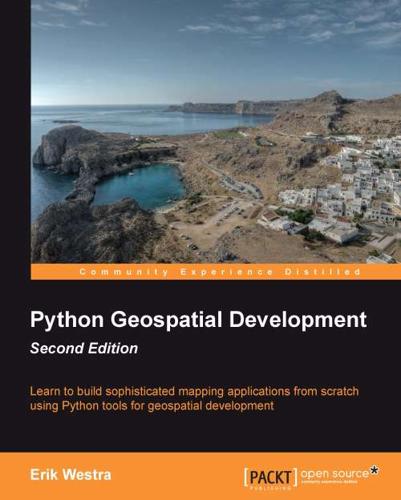
Python Geospatial Development - Second Edition
by
Erik Westra
Published 23 May 2013
Index A AddGeometryColumn() function / Using SpatiaLite AddPoint() / Task – save the country bounding boxes into a shapefile add_dash() method / Dashed and dotted lines admin interface, Django applicationabout / The structure of a Django application admin system, Django applicationabout / Playing with the admin system adding / Playing with the admin system database, resynchronizing / Playing with the admin system database objects, adding / Playing with the admin system admin URLs, adding / Playing with the admin system working with / Playing with the admin system affine transformation, DEMabout / Task – analyze height data using a digital elevation map also rules / "Also" rules angular distanceabout / Distance / Using angular distances angular distances / Task – identify parks in or near urban areas Application Programming Interfaces (APIs)about / Recent developments application reviewabout / Application review and improvements usablity / Usability quality / Quality performance / Performance problem, searching / Finding the problem performance, improving / Improving performance tiled shorelines, calculating / Calculating the tiled shorelines tiled shorelines, using / Using tiled shorelines performance improvement, analyzing / Analyzing the performance improvement aspect ratio / Calculating the map's dimensions AsText() function / Using SpatiaLite attributesabout / Geospatial development authentication system, Django applicationabout / The structure of a Django application azimuthal projectionabout / Azimuthal projections B band.ReadRaster() method / Task – analyze height data using a digital elevation map Band Interleaved by Line (BIL) formatabout / GIS data formats Band Interleaved by Pixel (BIP) formatabout / GIS data formats Band Sequential (BSQ) formatabout / GIS data formats base layerabout / Tile rendering base mapsetting up / Setting up the base map best practices, geospatial databasesabout / Recommended best practices spatial references, monitoring / Using the database to keep track of spatial references appropriate spatial reference, using / Using the appropriate spatial reference for your data databases, using supporting geographies / Option 1 – using a database that supports geographies features, transforming / Option 2 – transforming features as required features, transforming outset / Option 3 – transforming features from the outset unprojected coordinates, using / When to use unprojected coordinates on-the-fly transformations, avoiding within query / Avoiding on-the-fly transformations within a query spatial indexes, using / Using spatial indexes appropriately limits, spatial query optimizer / Knowing the limits of your database's query optimizer Bingabout / Creating a geospatial mash-up bounding / The OpenStreetMap API C calc_search_radius() function / Implementing the find feature view changesets / The OpenStreetMap API civic locationabout / Location colorsusing / Using colors common spatially-enabled databasesabout / Commercial Spatially-enabled databases Oracle / Oracle MS SQL Server / MS SQL Server conditions, rules / Rules, filters, and styles conic projectionabout / Conic projections coordinatesabout / Geospatial development coordinate systemabout / Coordinate systems projected coordinate systems / Coordinate systems unprojected coordinate systems / Coordinate systems coordinate transformation / Task – change projections to combine shapefiles using geographic and UTM coordinates Core Based Statistical Areas (CBSAs) / Task – identify parks in or near urban areas country bounding boxes, geospatial datacalculating / Task – calculate the bounding box for each country in the world saving, into shapefile / Task – save the country bounding boxes into a shapefile coverage formatabout / GIS data formats CreateSpatialIndex() function / Using SpatiaLite crosses() method / Design cursor.execute() methodabout / MySQL cylindrical projectionsabout / Cylindrical projections D dash segments / Dashed and dotted lines datadownloading / Downloading the data World Borders Dataset / World Borders Dataset, World Borders Dataset GSHHS / GSHHS, GSHHS GNIS / GNIS GEOnet Names Server / GEOnet Names Server importing / Importing the data places name data / US place name data worldwide places name data / Worldwide place name data data modelsdefining / Defining the data models shapefile, importing / Shapefile attribute / Attribute feature / Feature AttributeValue object / AttributeValue models.py file / The models.py file data sourcesetting up / Setting up the data source Datasource object / Design datasourcesshapefile / Shapefile PostGIS / PostGIS Gdal / Gdal Org / Ogr SQLite / SQLite OSM / OSM MemoryDatasource / MemoryDatasource datumabout / Datums, Changing datums and projections reference points / Datums NAD 27 / Datums NAD 83 / Datums WGS 84 / Datums changing / Task – change datums to allow older and newer TIGER data to be combined decimal degrees / Analyzing geospatial data defaultHandlerOptions dictionary / Intercepting mouse clicks design, MapnikLayers / Design Styles / Design Symbolizers / Design Destroy() method / Task – save the country bounding boxes into a shapefile, Saving the features into the shapefile digital elevation maps (DEM) / Sources of geospatial data in raster formatabout / Task – analyze height data using a digital elevation map used, for analyzing height data / Task – analyze height data using a digital elevation map affine transformation / Task – analyze height data using a digital elevation map Digital Elevation Model (DEM) formatabout / GIS data formats Digital Raster Graphic (DRG) formatabout / GIS data formats DISTALbasic workflow / About DISTAL database, designing / Designing and building the database database, building / Designing and building the database DISTAL applicationimplementing / Implementing the DISTAL application, The "select country" script about / Implementing the DISTAL application shared database module / The shared "database" module select country script / The "select country" script select area script / The "select area" script show result script / The "show results" script DISTAL databasedesigning / Designing and building the database distanceabout / Distance angular distance / Distance linear distance / Distance traveling distance / Distance distance featuresidentifying, manually / Calculating distances manually angular distance, using / Using angular distances projected coordinates, using / Using projected coordinates hybrid approach / A hybrid approach result, displaying / Displaying the results Django administrationworking with / Playing with the admin system Django applicationdownloading / Prerequisites structure / The structure of a Django application authentication system / The structure of a Django application admin interface / The structure of a Django application markup application / The structure of a Django application messages framework / The structure of a Django application sessions system / The structure of a Django application sitemaps framework / The structure of a Django application syndication system / The structure of a Django application settings file / The structure of a Django application model / The structure of a Django application, Models view / The structure of a Django application, Views templates / The structure of a Django application, Templates URL dispatching / URL dispatching data-entry forms / Templates DSG (Feature Designation Code) field / Worldwide place name data E edit_feature() function / Editing features edit_shapefile() function / Intercepting mouse clicks edit_shapeFile() view function / Intercepting mouse clicks else rules / "Else" rules envelope / Task – calculate the bounding box for each country in the world ESRI format / Obtaining and using GLOBE data European Petroleum Survey Group (EPSG) / Using the database to keep track of spatial references EveryBlockURL / Mapnik example map, Mapnikcreating / Creating an example map expandRect() function / Calculating the tiled shorelines export_data() function / Exporting shapefiles, Saving the attributes into the shapefile export_shapefile() view function / Exporting shapefiles F FC (Feature Classification) field / Worldwide place name data Feature Classification (FC) / Obtaining and using GEOnet Names Server data Feature Designation Code (DSG) / Obtaining and using GEOnet Names Server data feature layerabout / Tile rendering featuresediting / Editing features adding / Adding features deleting / Deleting features fields / Task – calculate the bounding box for each country in the world filterabout / Introducing Mapnik Filter() constructor / Filters filters, Mapnikabout / Filters scale denominators / Scale denominators find feature viewimplementing / Implementing the find feature view findPoints() function / Working with GIS data manually find_feature() function / Implementing the find feature view find_feature_url parameter / Intercepting mouse clicks find_places_within() function / A hybrid approach fixtureabout / Setting up the base map form.as_table template function / Editing features formsabout / The "import shapefile" view function FWTools installerURL / Working with GIS data manually G gamma correction / Gamma correction GDALabout / Recent developments / Obtaining and using GLOBE data, Drawing raster images GDAL, for Mac OS X / Working with GIS data manually GDAL/OGRabout / GDAL/OGR documentation / Documentation availability / Availability Gdal data sourceabout / Gdal gdaldem utility / Obtaining and using NED data GDAL designabout / GDAL design dataset / GDAL design raster band / GDAL design raster size / GDAL design georeferencing transform / GDAL design affine transformation / GDAL design Ground Control Points (GCPs) / GDAL design coordinate system / GDAL design metadata / GDAL design band raster size / GDAL design band metadata / GDAL design color table / GDAL design raster data / GDAL design drivers / GDAL design GDAL example codeabout / GDAL example code GDAL Python librarydownloading / Working with GIS data manually Generalized Search Tree (GiST)about / Spatial indexes generateMap() functionabout / The MapGenerator interface / Rendering the map Generic Mapping Tools (GMT)URL / Data format about / Data format geocode / Analyzing geospatial data geocoder / Advanced PostGIS features Geodabout / Geod fwd() method / Geod inv() method / Geod npts() method / Geod geodetic locationabout / Location GeoDjango / Prerequisites Geographical Information System (GIS) vendors / Geospatial development geographies / Using PostGIS Geography Markup Language (GML) format / GIS data formats GeoJSON format / GIS data formats Geolocationabout / Recent developments geometries / Using PostGIS geometry / Task – calculate the bounding box for each country in the world GeometryCollection class / Design geometry typesPoint / Implementing the find feature view LineString / Implementing the find feature view Polygon / Implementing the find feature view MultiPoint / Implementing the find feature view MultiLineString / Implementing the find feature view MultiPolygon / Implementing the find feature view GeometryCollection / Implementing the find feature view geometry unitsconverting / Converting and standardizing units of geometry and distance standardizing / Converting and standardizing units of geometry and distance Thai-Myanmar border lenght, calculating / Task – calculate the length of the Thai-Myanmar border Shoshone latitude, calculating / Task – find a point 132.7 kilometers west of Soshone, California Shoshone longitude, calculating / Task – find a point 132.7 kilometers west of Soshone, California GEOnet Names Serverabout / GEOnet Names Server screenshot / GEOnet Names Server data format / Data format obtaining / Obtaining and using GEOnet Names Server data using / Obtaining and using GEOnet Names Server data / Designing and building the database, GEOnet Names Server GeoRSSabout / Recent developments geospatialabout / Geospatial development geospatial calculationsperforming / Performing geospatial calculations parks, identifying in or near urban areas / Task – identify parks in or near urban areas geospatial dataabout / Geospatial development coordinates / Geospatial development attributes / Geospatial development analyzing / Analyzing geospatial data, Analyzing and manipulating geospatial data visualizing / Visualizing geospatial data, Visualizing geospatial data GDAL / GDAL/OGR OGR / GDAL/OGR GDAL design / GDAL design GDAL example code / GDAL example code OGR design / OGR design OGR example code / OGR example code manipulating / Analyzing and manipulating geospatial data sources / Sources of other types of geospatial data pre-requisites / Pre-requisites reading / Reading and writing geospatial data writing / Reading and writing geospatial data country bounding boxes, calculating / Task – calculate the bounding box for each country in the world country bounding boxes, saving into shapefile / Task – save the country bounding boxes into a shapefile height data, analyzing with DEM / Task – analyze height data using a digital elevation map representing / Representing and storing geospatial data storing / Representing and storing geospatial data Thailand and Myanmar border, calculating / Task – define the border between Thailand and Myanmar geometries, saving into text file / Task – save geometries into a text file geospatial databasesbest practices / Recommended best practices geospatial databases, Python usedprerequisites / Prerequisites MySQL, working with / Working with MySQL PostGIS, working with / Working with PostGIS SpatiaLite, working with / Working with SpatiaLite comparing / Comparing the databases geospatial developmentabout / Geospatial development overview / Recent developments geospatial development applicationsgeospatial data, analyzing / Analyzing geospatial data geospatial data, visualizing / Visualizing geospatial data geospatial mash-up, creating / Creating a geospatial mash-up geospatial mash-upcreating / Creating a geospatial mash-up GeoTIFF files / Obtaining and using NED data getattr() function / Editing features GetNoDataValue() method / Task – analyze height data using a digital elevation map get_country_datasource() function / Displaying the results get_datasource() function / Setting up the data source get_map_form() function / Editing features get_map_widget() / Editing features get_ogr_feature_attribute() function / Saving the attributes into the shapefile get_shoreline_datasource() function / Using tiled shorelines GISspatially-enabled databases / Spatially-enabled databases spatial indexes / Spatial indexes open source spatially-enabled databases / Open source spatially-enabled databases common spatially-enabled databases / Commercial Spatially-enabled databases GIS conceptsabout / Core GIS concepts location / Location distance / Distance units / Units projection / Projections coordinate system / Coordinate systems datums / Datums shapes / Shapes GIS dataworking manually / Working with GIS data manually GIS data formatabout / GIS data formats raster format data / GIS data formats vector format data / GIS data formats micro-formats / GIS data formats Global Land Cover Facility / Obtaining Landsat imagery Global Positioning System (GPS)about / Recent developments GLOBEabout / Global Land One-kilometer Base Elevation (GLOBE) data format / Data format data, obtaining / Obtaining and using GLOBE data GLOBE DEM dataabout / Global Land One-kilometer Base Elevation (GLOBE) GMLabout / Recent developments GNISabout / Geographic Names Information System (GNIS) screenshot / Geographic Names Information System (GNIS) data format / Data format obtaining / Obtaining and using GNIS Data using / Obtaining and using GNIS Data / GNIS GNIS Database / Designing and building the database Google Earthabout / Recent developments Google Mapsabout / Recent developments Google Maps APIabout / Creating a geospatial mash-up great circle distance calculation / Working with GIS data manually GSHHSabout / Global, self-consistent, hierarchical, high-resolution shoreline database (GSHHS) screenshot / Global, self-consistent, hierarchical, high-resolution shoreline database (GSHHS) data format / Data format obtaining / Obtaining the GSHHS database / GSHHS H handleResponse() callback function / Intercepting mouse clicks Haversine formulaURL / Working with GIS data manually height data, geospatial dataanalyzing, DEM used / Task – analyze height data using a digital elevation map HTML Forms / The "select country" script I import shapefile view function / The "import shapefile" view function import_data() function / Importing shapefiles, Extracting the uploaded shapefile imposmURL / Working with OpenStreetMap data J jurisdictional locationsabout / Location K KMLabout / Recent developments L labelsdrawing / Drawing labels Landsatabout / Landsat data format / Data format Landsat imageryobtaining / Obtaining Landsat imagery Layer objectsabout / Introducing Mapnik layersabout / Maps and layers Layers, Mapnikabout / Design libspatialite / Installing SpatiaLite libspatialite extensionloading / Accessing SpatiaLite from Python line-drawing optionsline color / Line color line width / Line width opacity / Opacity line caps / Line caps line joins / Line joins dashed and dotted lines / Dashed and dotted lines linear distanceabout / Distance linear ringabout / Shapes LinearRing class / Design linear rings / Task – save the country bounding boxes into a shapefile LinePatternSymbolizerabout / LinePatternSymbolizer linesdrawing, onto map / Drawing lines linestringabout / Shapes LineString class / Design LineSymbolizerabout / Introducing Mapnik, LineSymbolizer using / LineSymbolizer LinuxSpatiaLite, installing / Installing SpatiaLite list shapefiles viewimplementing / Implementing the "list shapefiles" view list_countries() function / The "select country" script list_shapefiles() view function / Implementing the "list shapefiles" view locationsabout / Location measuring / Location LULC datafiles / Task – change projections to combine shapefiles using geographic and UTM coordinates M Mac OS XSpatiaLite, installing / Installing SpatiaLite Map Definition Fileabout / Introducing Mapnik map definition fileabout / Map definition files MapGeneratorabout / MapGenerator revisited interface / The MapGenerator interface main map layer, creating / Creating the main map layer points, displaying on map / Displaying points on the map map, rendering / Rendering the map mapGenerator.generateMap() function / Rendering the map image mapGenerator.py moduleabout / The MapGenerator interface Mapnikabout / Creating a geospatial mash-up, Mapnik, Introducing Mapnik features / Mapnik, Introducing Mapnik design / Design example code / Example code documentation / Documentation availability / Availability URL / Availability, Introducing Mapnik map, generating / Introducing Mapnik Polygons layer / Introducing Mapnik example map, creating / Creating an example map Python documentation / Mapnik in depth data sources / Data sources rules / Rules, filters, and styles styles / Rules, filters, and styles filters / Rules, filters, and styles symbolizers / Symbolizers maps / Maps and layers layers / Maps and layers map rendering / Map rendering mapnik.Layer classmethods / Layer attributes and methods mapnik.Map classattributes / Map attributes and methods methods / Map attributes and methods mapnik.Shapefile() function / Shapefile mapnik.SQLite() function / SQLite Mapnik Datasource objectsetting up / Data sources Mapnik WikiURL / Documentation map renderingabout / Map rendering mapsabout / Maps and layers MapServerabout / Creating a geospatial mash-up markup application, Django applicationabout / The structure of a Django application MBRContains() function / MySQL MemoryDatasourceabout / MemoryDatasource meridiansabout / Location messages framework, Django applicationabout / The structure of a Django application micro-formatsWell-known Text (WKT) / GIS data formats Well-known Binary (WKB) / GIS data formats GeoJSON / GIS data formats Geography Markup Language (GML) / GIS data formats minimum bounding rectangleabout / Spatial indexes / MySQL models, Djangoabout / Models models.py fileediting / The models.py file mouse clicks, ShapeEditor applicationintercepting / Intercepting mouse clicks MS SQL Serverabout / MS SQL Server MS WindowsSpatiaLite, installing / Installing SpatiaLite MultiLineString class / Design MultiPoint class / Design MultiPolygon class / Design MySQLabout / MySQL downloading / MySQL acessing, from Python programs / MySQL disadvantages / MySQL MySQL-Python driver / MySQLabout / MySQL MySQLdbURL / MySQL MySQL query optimizerabout / MySQL N NAD 27about / Datums NAD 83about / Datums National Map Viewer / Obtaining and using NED data Natural Earth, raster-format dataabout / Natural Earth raster maps / Natural Earth data format / Data format obtaining / Obtaining and using Natural Earth raster data using / Obtaining and using Natural Earth raster data Natural Earth, vector-format dataURL / Natural Earth about / Natural Earth cultural map data / Natural Earth physical map data / Natural Earth data format / Data format data, obtaining / Obtaining and using Natural Earth vector data data, using / Obtaining and using Natural Earth vector data nature of map projectionsabout / The nature of map projections NEDabout / National Elevation Dataset (NED) data format / Data format data, obtaining / Obtaining and using NED data data, using / Obtaining and using NED data no data value / Task – analyze height data using a digital elevation map NT (Name Type) field / Worldwide place name data O OGRabout / Recent developments Ogr data sourceabout / Ogr OGR designabout / OGR design data source / OGR design layers / OGR design spatial reference / OGR design feature / OGR design attributes / OGR design geometry / OGR design OGR example codeabout / OGR example code OGR Shapefiledefining / Defining the OGR shapefile onClick() function / Intercepting mouse clicks Open Geospatial ConsortiumURL / Recent developments about / Recent developments Openlayersabout / Creating a geospatial mash-up OpenLayersused, for displaying map / Using OpenLayers to display the map OpenLayers.Control.Click class / Intercepting mouse clicks OpenLayers.Request.GET function / Intercepting mouse clicks open source spatially-enabled databasesabout / Open source spatially-enabled databases MySQL / MySQL PostGIS / PostGIS SpatiaLite / SpatiaLite OpenStreetMapURL / Mapnik, OpenStreetMap about / OpenStreetMap screenshot / OpenStreetMap data format / Data format geospatial data, obtaining / Obtaining and using OpenStreetMap data geospatial data, using / Obtaining and using OpenStreetMap data data, working with / Working with OpenStreetMap data OpenStreetMap API / The OpenStreetMap API OpenStreetMap geocoderabout / Recent developments Oracleabout / Oracle Oracle Locatorabout / Oracle Oracle Spatialabout / Oracle orthorectification / Data format os.path.join() function / Shapefile osm2pgsql tool / Working with OpenStreetMap data OsmApi / The OpenStreetMap API OSM data sourceabout / OSM overlay / Visualizing geospatial data P painters algorithmabout / Introducing Mapnik parallelsabout / Location parametersabout / URL dispatching Planet.osmabout / Planet.osm mirror site / Mirror sites and extracts extracts / Mirror sites and extracts pointabout / Shapes Point class / Design pointsdrawing / Drawing points PointSymbolizerabout / PointSymbolizer polygonabout / Shapes polygon-drawing optionsfill color / Fill color attribute / Opacity gamma correction / Gamma correction polygon.contains(point) method / MySQL Polygon class / Design PolygonPatternSymbolizerabout / PolygonPatternSymbolizer polygonsdrawing / Drawing polygons PolygonSymbolizerabout / Introducing Mapnik, PolygonSymbolizer polylinesabout / Shapes PostGIS / Analyzing geospatial dataabout / Recent developments, PostGIS installing / Installing and configuring PostGIS downloading / Installing and configuring PostGIS configuring / Installing and configuring PostGIS using / Using PostGIS documentation / Documentation features / Advanced PostGIS features PostGIS databasesetting up, for ShapeEditor application / Setting up the database PostGIS datasourceabout / PostGIS PostGIS manualURL / Documentation PostGIS query optimizerabout / PostGIS PostgreSQL database / PostGIS PostgreSQL manualURL / Documentation prime meridianabout / Location Projabout / Proj PROJ.4about / Recent developments, Availability projected coordinate systemabout / Coordinate systems projectionabout / Geospatial development, Projections, Changing datums and projections cylindrical projections / Cylindrical projections conic projection / Conic projections azimuthal projection / Azimuthal projections nature of map projections / The nature of map projections dealing with / Dealing with projections pyproj / pyproj design / Design example code / Example code documentation / Documentation availability / Availability changing / Task – change projections to combine shapefiles using geographic and UTM coordinates Proj Python library / Analyzing geospatial data Psycopginstalling / Installing and configuring PostGIS Psycopg database / PostGIS Psycopg documentationURL / Documentation pyproj libraryabout / Design Proj / Proj Geod / Geod for MS Windows / Availability for Linux / Availability for Macintosh / Availability pysqliteinstalling / Installing pysqlite URL / Installing pysqlite PythonURL / Python about / Python features / Python Python Database APIabout / MySQL Python Database Programming Wiki pageURL / MySQL Python Package Indexabout / Python URL / Python geospatial development / Geospatial development Python Standard Librariesabout / Python Q qualityplace name issues / Place name issues Lat/Long coordinate problems / Lat/Long coordinate problems query optimization processMySQL / MySQL PostGIS / PostGIS SpatiaLite / SpatiaLite R R-Tree data structuresabout / Spatial indexes R-Tree indexesabout / Spatial indexes raster format dataabout / GIS data formats Digital Raster Graphic (DRG) / GIS data formats Digital Elevation Model (DEM) / GIS data formats BIL / GIS data formats BIP / GIS data formats BSQ / GIS data formats raster imagesdrawing / Drawing raster images raster mapsabout / Natural Earth Cross-Blended Hypsometric Tints / Natural Earth Natural Earth 1 / Natural Earth Natural Earth 2 / Natural Earth Ocean Bottom dataset / Natural Earth Shaded Relief imagery / Natural Earth RasterSymbolizerabout / Drawing raster images uses / Drawing raster images ReadRaster() method / Task – analyze height data using a digital elevation map reference pointsabout / Coordinate systems roadsdrawing / Drawing roads and other complex linear features root() functionabout / Implementing Tile Map Server ruleabout / Introducing Mapnik rules, Mapnikconditions / Rules, filters, and styles symbolizers / Rules, filters, and styles else rules / "Else" rules also rules / "Also" rules S scale denominators / Scale denominators select area scriptabout / The "select area" script bounding box, calculating / Calculating the bounding box maps dimension, calculating / Calculating the map's dimensions data source, setting up / Setting up the data source map image, rendering / Rendering the map image select country script / The "select country" script select_feature.html template / Adding features service() functionabout / Implementing Tile Map Server sessions system, Django applicationabout / The structure of a Django application setattr() function / Editing features SetField() method / Saving the attributes into the shapefile setField() method / Task – save the country bounding boxes into a shapefile set_ogr_feature_attribute() function / Saving the attributes into the shapefile shaded relief imagery / Sources of geospatial data in raster format ShapeEditor applicationworkflow / About ShapeEditor, Selecting a feature to edit web interface / About ShapeEditor shapefile, importing / About ShapeEditor, Importing a shapefile, Importing shapefiles features / About ShapeEditor designing / Designing ShapeEditor feature, selecting / Selecting a feature feature, editing / Editing a feature shapefile, exporting / Exporting a shapefile, Exporting shapefiles prerequisites / Prerequisites database, setting up / Setting up the database setting up / Setting up the ShapeEditor project defining / Defining the ShapeEditor's applications shared application, creating / Creating the shared application data models, defining / Defining the data models admin system / Playing with the admin system list shapefiles view, implementing / Implementing the "list shapefiles" view feature, selecting for edit / Selecting a feature to edit Tile Map Server, implementing / Implementing Tile Map Server mouse clicks, intercepting / Intercepting mouse clicks features, editing / Editing features features, adding / Adding features features, deleting / Deleting features shapefiles, deleting / Deleting shapefiles using / Using ShapeEditor enhancements / Further improvements and enhancements shapefile datasourceabout / Shapefile Shapefile formatabout / GIS data formats Shapefile objectadding, to database / Add the Shapefile object to the database shapefilesimporting / Importing shapefiles contents, importing / Importing the shapefile's contents opening / Open the shapefile attributes, defining / Define the shapefile's attributes features, storing / Store the shapefile's features attributes, storing / Store the shapefile's attributes cleaning up / Cleaning up deleting / Deleting shapefiles shapefiles, exportingabout / Exporting shapefiles OGR Shapefile, defining / Defining the OGR shapefile features, saving into shapefile / Saving the features into the shapefile attributes, saving into shapefile / Saving the attributes into the shapefile shapefile, compressing / Compressing the shapefile temporary files, deleting / Deleting temporary files ZIP archive, returning to user / Returning the ZIP archive to the user Shapelyabout / Shapely design / Design Point class / Design LineString class / Design LinearRing class / Design Polygon class / Design MultiPoint class / Design MultiLineString class / Design MultiPolygon class / Design GeometryCollection class / Design example code / Example code documentation / Documentation availability / Availability shapesabout / Shapes point / Shapes linestring / Shapes polygon / Shapes shared.utils module / Implementing the find feature view shared database module / The shared "database" module ShieldSymbolizerabout / ShieldSymbolizer showResults.py script / Using tiled shorelines show result scriptabout / The "show results" script clicked-on point, identifying / Identifying the clicked-on point distance features, identifying / Identifying features by distance simple features formatabout / GIS data formats sitemaps framework, Django applicationabout / The structure of a Django application source code format, Linuxabout / MySQL source code format, Mac OS X about / MySQL sources, geospatial dataabout / Sources of other types of geospatial data GEOnet Names Server / GEOnet Names Server GNIS / Geographic Names Information System (GNIS) selecting / Choosing your geospatial data source sources, raster-format geospatial dataabout / Sources of geospatial data in raster format Landsat / Landsat Natural Earth / Natural Earth GLOBE / Global Land One-kilometer Base Elevation (GLOBE) National Elevation Dataset (NED) / National Elevation Dataset (NED) sources, vector-format geospatial dataOpenStreetMap / OpenStreetMap TIGER / TIGER Natural Earth / Natural Earth GSHHS / Global, self-consistent, hierarchical, high-resolution shoreline database (GSHHS) World Borders Dataset / World Borders Dataset spatial datatypes / Spatially-enabled databases spatial functions / Spatially-enabled databases spatial indexesabout / Spatial indexes R-Tree indexes / Spatial indexes SpatiaLiteabout / SpatiaLite installing / Installing SpatiaLite installing, on Mac OS X / Installing SpatiaLite installing, on MS Windows / Installing SpatiaLite installing, on Linux / Installing SpatiaLite pysqlite, installing / Installing pysqlite accessing, from Python / Accessing SpatiaLite from Python documentation / Documentation URL / Documentation online documentation / Documentation using / Using SpatiaLite capabilities / SpatiaLite capabilities SpatiaLite query optimizerabout / SpatiaLite spatial joins / Spatially-enabled databases spatially-enabled databasesabout / Spatially-enabled databases functioning / Spatially-enabled databases spatial queries / Spatially-enabled databases spatial query functions / Implementing the find feature view spatial reference / Design, Task – save the country bounding boxes into a shapefile, Representing and storing geospatial data, Using the database to keep track of spatial references Spatial Reference Identifier (SRID) / Using the database to keep track of spatial references SQLite data sourceabout / SQLite Styles, Mapnikabout / Design, Introducing Mapnik ST_AsText() function / Using PostGIS ST_CONTAINS() function / A hybrid approach ST_DWITHIN() function / A hybrid approach ST_GeomFromText() function / Using PostGIS subselect queryabout / PostGIS using / PostGIS Symbolizers, Mapnikabout / Design, Introducing Mapnik PolygonSymbolizer / Introducing Mapnik LineSymbolizer / Introducing Mapnik TextSymbolizer / Introducing Mapnik lines, drawing / Drawing lines polygons, drawing / Drawing polygons labels, drawing / Drawing labels points, drawing / Drawing points syndication system, Django applicationabout / The structure of a Django application T template, Djangoabout / Templates terminology, TMS protocolTile Map Server / Implementing Tile Map Server Tile Map Service / Implementing Tile Map Server Tile Map / Implementing Tile Map Server Tile Set / Implementing Tile Map Server Tile / Implementing Tile Map Server TextSymbolizerabout / Introducing Mapnik, TextSymbolizer text, selecting for display / Specifying the text to be displayed font, selecting / Selecting a suitable font semi-transparent text, drawing / Drawing semi-transparent text text placement, controlling / Controlling text placement labels, repeating / Repeating labels text overlap, controlling / Controlling text overlap text, drawing on dark background / Drawing text on a dark background position, adjusting of text / Adjusting the position of the text labels, splitting across multiple lines / Splitting labels across multiple lines character spacing, controlling / Controlling character and line spacing line spacing, controlling / Controlling character and line spacing capitalization, controlling / Controlling capitalization advanced text placement and formatting / Advanced text placement and formatting TIGERabout / TIGER data format / Data format data, obtaining / Obtaining and using TIGER data data, using / Obtaining and using TIGER data TIGER/Line formatabout / GIS data formats Tileabout / Implementing Tile Map Server Tile Mapabout / Implementing Tile Map Server tileMap() function / Implementing Tile Map Serverabout / Implementing Tile Map Server Tile Map Servercompleting / Completing the Tile Map Server Tile Map Server (TMS) / Selecting a feature Tile Map Serviceabout / Implementing Tile Map Server tilePolys array / Calculating the tiled shorelines tile renderingabout / Tile rendering query parameters, parsing / Parsing the query parameters map, setting up / Setting up the map base layer, defining / Defining the base layer feature layer, defining / Defining the feature layer map tile, rendering / Rendering the map tile Tile Setabout / Implementing Tile Map Server TMS protocolimplementing / Implementing Tile Map Server about / Implementing Tile Map Server terminology / Implementing Tile Map Server error handling / Implementing Tile Map Server base map, setting up / Setting up the base map tile, rendering / Tile rendering map, displaying with OpenLayers / Using OpenLayers to display the map traveling distanceabout / Distance triggersabout / SpatiaLite U unitsabout / Units Universal Transverse Mercator (UTM) coordinate systemabout / Coordinate systems Universal Transverse Mercator (UTM) projection / Task – change projections to combine shapefiles using geographic and UTM coordinates unprojected coordinatesabout / Geospatial development unprojected coordinate systemabout / Coordinate systems unwrap_geos_geometry() function / Saving the features into the shapefile uploaded shapefileextracting / Extracting the uploaded shapefile URLConfabout / URL dispatching URL dispatching, Djangoabout / URL dispatching usability / Usability US Census BureauURL / Working with GIS data manually utils.calc_geometry_field() / Editing features utils.get_map_form() / Editing features utils.get_ogr_feature_attribute() function / Saving the attributes into the shapefile V vector-format geospatial dataabout / Sources of geospatial data in vector format sources / Sources of geospatial data in vector format vector format dataabout / GIS data formats shapefile / GIS data formats simple features / GIS data formats TIGER/Line / GIS data formats coverage / GIS data formats view, Djangoabout / Views Virtual Datasource (VRT) formatabout / Ogr W WCSabout / Recent developments WebGIS websiteURL / Task – change projections to combine shapefiles using geographic and UTM coordinates Well-known Binary (WKB) format / GIS data formats, Representing and storing geospatial data Well-known Text (WKT) format / GIS data formats, Representing and storing geospatial data WFSabout / Recent developments WGS 84about / Datums WMSabout / Recent developments World Borders Datasetabout / World Borders Dataset data format / Data format obtaining / Obtaining World Borders Dataset downloading / Task – calculate the bounding box for each country in the world / World Borders Dataset, World Borders Dataset World Data Bank II / Global, self-consistent, hierarchical, high-resolution shoreline database (GSHHS) world reference system (WRS) / Obtaining Landsat imagery World Vector Shoreline / Global, self-consistent, hierarchical, high-resolution shoreline database (GSHHS) X XCodeabout / Availability installing / Availability
…
OSM The OSM data source allows you to include OpenStreetMap data onto a map. The OpenStreetMap data is stored in .osm format, which is an XML format containing the underlying nodes, ways and relations used by OpenStreetMap. The OpenStreetMap data format, and options for downloading .osm files, can be found at: http://wiki.openstreetmap.org/wiki/.osm If you have downloaded a .osm file and want to access it locally, you can set up your data source like this: datasource = mapnik.OSM(file="myData.osm") If you wish to use an OpenStreetMap API call to retrieve the OSM data on the fly, you can do this by supplying a URL to read the data from, along with a bounding box to identify which set of data you want to download.
…
Often, these features will have metadata associated with them. In this section, we will look at some of the major sources of free vector-format geospatial data. OpenStreetMap OpenStreetMap (http://openstreetmap.org) is a website where people can collaborate to create and edit geospatial data. It describes itself as a "free editable map of the whole world made by people like you." The following screenshot shows a portion of a street map for Onchan, Isle of Man, based on data from OpenStreetMap: Data format OpenStreetMap does not use a standard format such as shapefiles to store its data. Instead, it has developed its own XML-based format for representing geospatial data in the form of nodes (single points), ways (sequences of points that define a line), areas (closed ways that represent polygons), and relations (collections of other elements).

Data Action: Using Data for Public Good
by
Sarah Williams
Published 14 Sep 2020
Though the term VGI seems largely relegated to the work of academic geographers, it was developed to highlight that a community of people exists who are interested in telling us what they are doing and where they are doing it, and if we can tap into that community we can use it to understand new social-spatial phenomenon. Crowdsourcing a Global Data Set A well-known example of VGI (or community mapping) is Open-StreetMap. By allowing participants anywhere to upload GPS traces, OpenStreetMap created and provides a worldwide basemap that is free for anyone to use. The basemap includes roads, parks, and major points of interests, and in some locales it even includes building outlines. OpenStreetMap was developed in 2004 by Steve Coast, then a PhD student at University College London, in response to the control of basic map data in the United Kingdom.
…
This meant it was difficult to obtain basic census, postal code, streets, parks, and building data. Coast envisioned creating a Wikipedia for maps data by allowing any novice map hobbyist to contribute to his platform using verified data from handheld GPS units. Since its inception, OpenStreetMap has had close to two million contributors.15 Coast's OpenStreetMap was meant to free data he believed should be accessible to the public. Before OpenStreetMap, if you wanted base data for anywhere in the world, you would have to purchase it from two big companies, Tele Atlas and Navteq, and the data did not come cheap. Google Maps used a combination of Navteq and Tele Atlas data during its first few years, and the costs for licensing this data rose so high that it became more cost-effective for Google to develop its own worldwide basemap; you may have seen a Google Maps car, with a camera mounted to its roof, driving through your neighborhood.
…
Attending map parties was a way to learn from peers while generating data under the ethos of open-source principles and practices. In 2007 OpenStreetMap held its first “State of the Map” conference, which has since become one of the main gatherings for the open-source map community.16 Recently at this conference the Red Cross, USAID, and a number of other humanitarian organizations demonstrated techniques for building data for disaster relief using OpenStreetMap tools. For example, the Red Cross developed OpenMapKit, a tool that allows its staff to collect data in remote areas where limited internet and cell networks make accessing and uploading data to OpenStreetMap's database difficult. OpenMapKit solves this problem by making it possible to save the data on surveyors’ mobile phones until, once in reach of cell networks, the data can be easily uploaded.
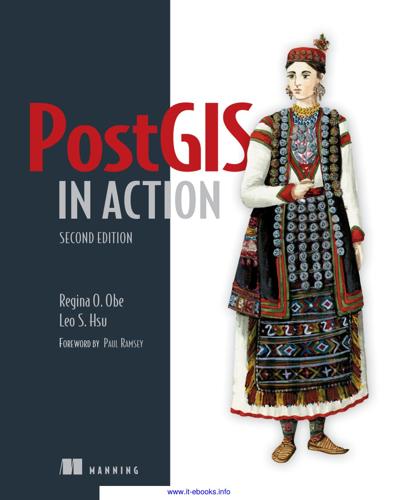
PostGIS in Action, 2nd Edition
by
Regina O. Obe
and
Leo S. Hsu
Published 2 May 2015
In subsequent sections, we’ll add PostGIS layers and PostGIS queries that output JSON. OpenStreetMap tiles: publicly available tiles versus building your own For the base layers, we’ll use OpenStreetMap public tile servers for the exercises that follow. Because OpenStreetMap public tile servers run on donations, you may be cut off if you make a lot of calls to them. The tile usage policy is detailed at http:// wiki.openstreetmap.org/wiki/Tile_usage_policy. If you have heavy traffic, you should build your own tiles, or use tiles from a commercial service, such as MapQuest OSM tiles (http://wiki.openstreetmap.org/wiki/ Mapquest#MapQuest-hosted_map_tiles), CloudMade (http://cloudmade.com), or Mapbox (http://mapbox.com), which also provide storage and tools for building custom tiles.
…
Ogr2ogr is smart enough to know this, so it puts in the correct SRID for you. For more details about command-line switches specific to the OGR GPX driver, visit www.gdal.org/ogr/drv_gpx.html. OpenStreetMap is full of user-contributed GPX files uploaded by users worldwide. You can find these at www.openstreetmap.org/traces. We randomly selected one from Australia titled “A bike trip around Narangba” by going to www.openstreetmap.org/ traces/tag/australia and downloading the file www.openstreetmap.org/user/Ash %20Kyd/traces/468761. You can find out more about the data you’re about to load by using ogrinfo. Listing 4.2 Displaying info about GPX file using ogrinfo ogrinfo 468761.gpx Command INFO: Open of '468761.gpx' using driver 'GPX' successful. 1: waypoints (Point) 2: routes (Line String) 3: tracks (Multi Line String) 4: route_points (Point) 5: track_points (Point) Output Next, you can load this up into a staging schema with the simple ogr2ogr command shown in the next listing.
…
For example, if you picked the Arc de Triomphe area, the min longitude/latitude and max longitude/latitude will be filled in the bounding box coordinates. Something like 2.28568,48.87957,2.30371,48.8676 will appear in the coordinate text boxes. Select OpenStreetMap XML Data as the export format. We called ours arctriump.osm. Licensed to tracy moore <nordick.an@gmail.com> www.it-ebooks.info Importing OpenStreetMap data with osm2pgsql 101 You can also use one of the REST APIs provided by OpenStreetMap to achieve the same results. The following listing demonstrates carving out a similar section using a wget call. Note that the bbox argument corresponds to the minimum longitude/latitude and maximum longitude/latitude of the area you’re interested in.

PostGIS in Action
by
Regina O. Obe
and
Leo S. Hsu
Published 2 May 2015
In subsequent sections, we’ll add PostGIS layers and PostGIS queries that output JSON. OpenStreetMap tiles: publicly available tiles versus building your own For the base layers, we’ll use OpenStreetMap public tile servers for the exercises that follow. Because OpenStreetMap public tile servers run on donations, you may be cut off if you make a lot of calls to them. The tile usage policy is detailed at http://wiki.openstreetmap.org/wiki/Tile_usage_policy. If you have heavy traffic, you should build your own tiles, or use tiles from a commercial service, such as MapQuest OSM tiles (http://wiki.openstreetmap.org/wiki/Mapquest#MapQuest-hosted_map_tiles), CloudMade (http://cloudmade.com), or Mapbox (http://mapbox.com), which also provide storage and tools for building custom tiles.
…
Ogr2ogr is smart enough to know this, so it puts in the correct SRID for you. For more details about command-line switches specific to the OGR GPX driver, visit www.gdal.org/ogr/drv_gpx.html. OpenStreetMap is full of user-contributed GPX files uploaded by users worldwide. You can find these at www.openstreetmap.org/traces. We randomly selected one from Australia titled “A bike trip around Narangba” by going to www.openstreetmap.org/traces/tag/australia and downloading the file www.openstreetmap.org/user/Ash%20Kyd/traces/468761. You can find out more about the data you’re about to load by using ogrinfo. Listing 4.2. Displaying info about GPX file using ogrinfo Next, you can load this up into a staging schema with the simple ogr2ogr command shown in the next listing.
…
OpenLayers 3 general setup: postgis_in_action_ol3_1.htm First, you add the link to the OL3 CSS and JS files . Again you have the choice of using a hosted version or downloading and using one on your server. You then add an OpenStreetMap tile layer . The url property is optional and defaults to the OpenStreetMap tile server when not specified. You next add two layers from your WMS mapping server . As part of the load map , add the two layers to the map, and reproject to map units.This particular WMS layer call adds the layers as tiles of the same size as the OpenStreetMap tile. If you wanted single tiles to minimize on query calls to your server, you’d use ol.Layer.Image in conjunction with ol.source.ImageWMS.

Android Cookbook
by
Ian F. Darwin
Published 9 Apr 2012
*/ } }); } }); } To actually have your long-press open up a context menu, you need to perform some additional setup of the context menu itself. I’ve avoided including this, to make the example shorter and hopefully clearer. To test that it works, try, for example, adding a log statement. 16.16. Using OpenStreetMap Rachee Singh Problem You want to use OpenStreetMap (OSM) map data in your application in place of Google Maps. Solution Use the third-party osmdroid library to interact with OpenStreetMap data. Discussion OpenStreetMap is a free, editable map of the world. The OpenStreetMapView is an (almost) full/free replacement for Android’s MapView class. See the osmdroid Google code page for more details.
…
id=0B_rESQKgad5LY2U5MzVlMGYtOWY1Ni00NThhLTg0MmItMzI2MDgyYzRjNzI5&hl=en_US. 16.17. Creating Overlays in OpenStreetMap Maps Rachee Singh Problem You want to display graphics such as map markers on your OpenStreetMap view. Most map mechanisms provide an overlay feature that lets you draw these graphics in front of the main picture or map. Refer back to Figure 16-4. Solution Instantiate an Overlay class and add the overlay to the point you wish to demarcate on the map. Discussion To get started with OpenStreetMap, see Recipe 16.16. To add overlays, first we need to get a handle on the MapView defined in the XML layout of the activity.
…
The Interface type learning, Problem, See Also obfuscating code, Discussion sharing classes from other projects, Problem, Discussion ternary operator, Discussion Java Native Interface (JNI), Solution, Source Download URL java.io package, Solution, Solution java.net package, Using URL and URLConnection, Solution java.text package, General formatters, A better way, Discussion java.util package, Discussion, Discussion, Discussion java.util.logging package, Solution JavaME API, Discussion JavaScript language, Problem, Discussion, Problem, Discussion calendars written in, Problem, Discussion native handset functionality via, Problem, Discussion JavaScript Object Notation (JSON), Problem, Source Download URL, Problem loading Twitter timeline, Problem parsing, Problem, Source Download URL JAX-RS API, Discussion JDK (Java Development Kit), Installing the JDK (Java Development Kit), Installing Eclipse for Java development, Solution Eclipse IDE and, Installing Eclipse for Java development installing, Installing the JDK (Java Development Kit) jarsigner tool, Solution JNI (Java Native Interface), Solution, Source Download URL JPSTrack GPS tracking program, Discussion, Invoking BugSense at App Start, Discussion, Discussion BugSense example, Invoking BugSense at App Start camera activity example, Discussion keeping services running example, Discussion sharing classes example, Discussion JPStrack mapping application, Discussion JSON (JavaScript Object Notation), Problem, Source Download URL, Problem loading Twitter timeline, Problem parsing, Problem, Source Download URL JSONObject class, Problem, Source Download URL, Discussion parsing JSON using, Problem, Source Download URL toString() method, Discussion JUnit testing framework, Discussion, Step 3: Write and run your tests about, Discussion test classes supported, Step 3: Write and run your tests K kankan.wheel.widget package, Discussion Kernighan, Brian, Discussion key pairs, Generating a key pair (public and private keys) and a signing certificate key-press events, Problem keyboard input, timed, Problem Keyboard lid support property (AVD), Discussion Keyboard support property (AVD), Discussion KeyEvent class, Solution KeyListener class, Problem, See Also keystore, Registering the Google Maps API key, Generating a key pair (public and private keys) and a signing certificate keytool utility, Solution, See Also L LabelView class, Discussion Lafortune, Eric, Discussion landscape orientation (tablets), Optional guidelines Launch Options window, Discussion launcher icons, Problem, Discussion, Problem, Discussion creating with Inkscape, Problem, Discussion creating with Paint.NET, Problem, Discussion LayoutInflater class, Discussion, Discussion layout_column attribute, TableLayout and TableRow layout_height attribute, Discussion layout_span attribute, TableLayout and TableRow layout_width attribute, Discussion LEDs, Lighting the LED, Problem flashing in colors and patterns, Lighting the LED for notifications, Problem libraries, referencing, Problem License Validation Tool (LVT), Configuration file life cycle of Android apps, Problem, Discussion, Problem, Discussion about, Problem, Discussion reproducing scenarios for testing, Problem, Discussion LineAndPointRenderer class, Discussion LinearLayout class, Discussion, Discussion custom dialog example, Discussion gravity attribute, Discussion Linkify class, Discussion Linux command, Problem ListActivity class, Discussion, Use case (informal), Discussion, Discussion ArrayList class and, Discussion ContextMenu class and, Use case (informal) usage considerations, Discussion writing custom list adapter example, Discussion ListAdapter interface, Discussion ListView class, Solution, Discussion, Problem, Setting up a basic ListView, Problem, Problem, Source Download URL, Problem, Source Download URL, Problem, Problem, Discussion, Discussion, Problem, Problem, Discussion about, Discussion building list-based applications, Problem, Setting up a basic ListView creating “no data” view, Problem fetching and displaying Google Documents, Problem, Discussion handling orientation changes, Problem onListItemClick() method, Discussion section headers and, Problem, Source Download URL showing images and text, Problem, Source Download URL SlidingDrawer class and, Solution tracking user’s focus, Problem writing custom list adapter, Problem, Discussion Locale class, General formatters, Discussion localization, Ian’s basic steps: Internationalization location and map applications, Problem, See Also, Discussion, Problem, Source Download URL, Problem, Problem, Problem, Source Download URL, Problem, Problem, Problem, Source Download URL, Problem, Problem, Source Download URL, Problem, Source Download URL, Problem, Discussion, Problem, Problem, Binary Download URL, Problem, Problem, Source Download URL, Problem, Discussion, Problem, Binary Download URL, Problem, Source Download URL, Problem, Problem, Source Download URL, Problem, Source Download URL about, Discussion accessing GPS information, Problem, Problem adding device current location to Google Maps, Problem building maps in, Problem, See Also changing modes of MapView, Problem creating overlays for MapView, Problem, Discussion creating overlays in OpenStreetMap maps, Problem, Source Download URL drawing a location marker on MapView, Problem, Source Download URL drawing multiple location markers on MapView, Problem, Source Download URL drawing overlay icon without Drawable, Problem, Binary Download URL geocoding in, Problem getting location information, Problem, Source Download URL getting location updates with OpenStreetMap maps, Problem, Source Download URL handling long-press in MapView, Problem, Discussion handling touch events on OpenStreetMap overlays, Problem, Source Download URL implementing location search on Google Maps, Problem mocking GPS coordinates on devices, Problem, Source Download URL placing MapView inside TabView, Problem, Source Download URL reverse geocoding in, Problem using Google Maps in, Problem, Source Download URL using OpenStreetMap, Problem, Binary Download URL using scales on OpenStreetMap maps, Problem Location class, Discussion LocationListener interface, Discussion, Discussion, Solution, Discussion, Discussion accessing GPS information in apps, Solution getting location information, Discussion onLocationChanged() method, Discussion, Discussion, Discussion LocationManager class, Discussion, Discussion, Solution, What’s happening?
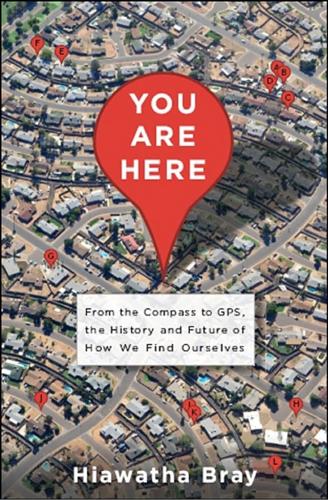
You Are Here: From the Compass to GPS, the History and Future of How We Find Ourselves
by
Hiawatha Bray
Published 31 Mar 2014
By contrast, all OSM maps are published under a broad copyright. Any individual or business can copy, modify, or reuse OpenStreetMap’s products to their heart’s content. They are merely required to post a notice giving credit to OpenStreetMap and its contributors. Few seem to mind Google’s profiteering, as long as it results in better maps. The success of OpenStreetMap has provided healthy competition, as well as fodder for good-natured disputation. Which model produces better maps—Google’s lavishly funded commercial operation or OpenStreetMap’s legions of untrained part-time amateurs? With its ample finances and direct access to the latest, sharpest satellite imagery, Google’s got an overall edge in quality that OpenStreetMap will not soon match.
…
Michael Cross, “OS Maps Finally Available to Not-for-Profit Organisations,” Guardian, December 13, 2007. 19. Jonathan Brown, “No. 1 in the Charts Since 1747; Now Its Maps Are Available on the Web,” Independent, April 2, 2010. 20. Carl Franzen, “OpenStreetMap Reaches 1 Million Users, Will Rival Google Maps in 2 Years,” Talking Points Memo, January 12, 2013, http://idealab.talkingpointsmemo.com/2013/01/openstreetmap-reaches-1-million-users-will-rival-google-maps-in-2-years.php. 21. Rocha, “A Map-Making Democracy.” 22. “MapQuest to Launch Open-Source Mapping in Europe,” Wireless News, July 20, 2010. 23. Rob D. Young, “Google Maps API to Charge for High-Volume Usage,” Search Engine Watch, November 2, 2011, http://searchenginewatch.com/article/2122151/Google-Maps-API-to-Charge-for-High-Volume-Usage. 24.
…
He created the software tools he would need, purchased a GPS unit—at the time GPS devices cost hundreds of dollars and were “larger than a brick”—attached it to a laptop, packed the setup into a backpack, and started pedaling his bike through the streets of central London. Bit by bit, his map of the area began to come together. Coast did more than pedal his bike; he also peddled his idea to anybody who would listen. He called it OpenStreetMap, a campaign to create a new kind of map, drawn by volunteers and available to everybody at no charge. Furthermore, OSM would not stop at creating a new map of the United Kingdom; Coast decided to cover the entire planet. That meant finding help, and a lot of it. Even though the participants would not earn a dime for their efforts, Coast believed they would step forward.
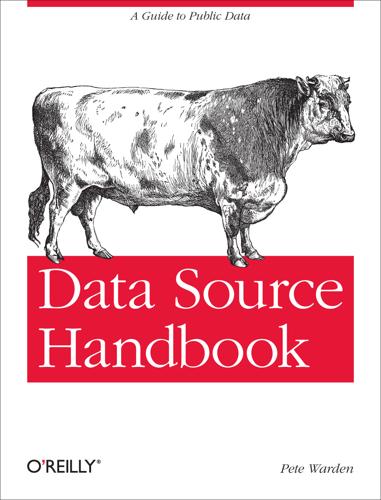
Data Source Handbook
by
Pete Warden
Published 15 Feb 2011
There are no rate limits, but you do have to get an API key and use OAuth to authenticate your calls: http://api.simplegeo.com/1.0/context/37.778381,-122.389388.json { "query":{ "latitude":37.778381, "longitude":-122.389388 }, "timestamp":1291766899.794, "weather": { "temperature": "65F", "conditions": "light haze" }, { "demographics": { "metro_score": 9 }, "features":[ { "handle":"SG_4H2GqJDZrc0ZAjKGR8qM4D_37.778406_-122.389506", "license":"http://creativecommons.org/licenses/by-sa/2.0/", "attribution":"(c) OpenStreetMap (http://openstreetmap.org/) and contributors CC-BY-SA (http://creativecommons.org/licenses/by-sa/2.0/)", "classifiers":[ { "type":"Entertainment", "category":"Arena", "subcategory":"Stadium" } ], "bounds":[ -122.39115, 37.777233, -122.387775, 37.779731 ], "abbr":null, "name":"AT&T Park", "href":"http://api.simplegeo.com/ 1.0/features/SG_4H2GqJDZrc0ZAjKGR8qM4D_37.778406_-122.389506.json" }, ...
…
<parameters applicable-location="point1"> <temperature type="maximum" units="Fahrenheit" time-layout="k-p24h-n8-1"> <name>Daily Maximum Temperature</name> <value>38</value> <value>33</value> <value>41</value> <value>41</value> <value>35</value> <value>32</value> <value>30</value> <value>35</value> </temperature> <temperature type="minimum" units="Fahrenheit" time-layout="k-p24h-n7-2"> <name>Daily Minimum Temperature</name> <value>22</value> <value>28</value> <value>34</value> <value>22</value> <value>24</value> <value>17</value> Locations | 23 <value>20</value> </temperature> </parameters> </data> </dwml> OpenStreetMap The volunteers at OpenStreetMap have created a somewhat-chaotic but comprehensive set of geographic information, and you can download everything they’ve gathered as a single massive file. One unique strength is the coverage of areas in the developing world that are absent from commercial databases, and since it’s so easy to change, even US locations are often more up-to-date with recent changes than more traditional maps.
…
ISBN: 978-1-449-30314-3 [LSI] 1295970672 Table of Contents Preface . . . . . . . . . . . . . . . . . . . . . . . . . . . . . . . . . . . . . . . . . . . . . . . . . . . . . . . . . . . . . . . . . . . . . vii Data Source Handbook . . . . . . . . . . . . . . . . . . . . . . . . . . . . . . . . . . . . . . . . . . . . . . . . . . . . . . . . . 1 Websites WHOIS Blekko bit.ly Compete Delicious BackType PagePeeker People by Email WebFinger Flickr Gravatar Amazon AIM FriendFeed Google Social Graph MySpace Github Rapleaf Jigsaw People by Name WhitePages LinkedIn GenderFromName People by Account Klout Qwerly Search Terms BOSS 1 1 2 3 3 4 5 5 5 6 6 6 7 7 8 8 9 10 10 11 11 11 11 11 12 12 12 12 13 v Blekko Bing Google Custom Search Wikipedia Google Suggest Wolfram Alpha Locations SimpleGeo Yahoo! Google Geocoding API CityGrid Geocoder.us Geodict GeoNames US Census Zillow Neighborhoods Natural Earth US National Weather Service OpenStreetMap MaxMind Companies CrunchBase ZoomInfo Hoover’s Yahoo! Finance IP Addresses MaxMind Infochimps Books, Films, Music, and Products Amazon Google Shopping Google Book Search Netflix Yahoo! Music Musicbrainz The Movie DB Freebase vi | Table of Contents 13 14 14 15 15 16 16 17 18 18 19 19 19 20 20 21 22 23 24 24 24 24 25 25 26 26 26 27 27 27 27 28 28 29 29 29 30 Preface A lot of new sources of free, public data have emerged over the last few years, and this guide covers some of the most useful.

Map Scripting 101: An Example-Driven Guide to Building Interactive Maps With Bing, Yahoo!, and Google Maps
by
Adam Duvander
Published 14 Aug 2010
You can install many programs on your computer that will do this for you. OpenStreetMap uses GPX to map the world. It sends volunteers to walk the streets with GPS units. Then, the track points, along with other information like street names, are used to create maps that are available for anyone—without licensing fees. In many countries, such as the United States, much of this street data is already available. OpenStreetMap volunteers, in these cases, are checking accuracy and filling in what's missing. In some places, OpenStreetMap is all there is, so the GPX tracks become incredibly important to the project.
…
This book shows you how to take advantage of these services and include their maps on your site. Instead of limiting you to one provider, I'll show you how to use all of them via an open source library called Mapstraction. Write your code once and watch it work in Google Maps, Bing, MapQuest, Yahoo!, OpenStreetMap, and more. In addition to teaching you how to work with maps from these providers, I'll show you many other common geographic projects. You'll learn how to calculate the distance between locations and embed driving directions on your own site. You'll also learn how to customize the way your map looks by adding your own icons, adding large graphic overlays, or even completely changing the underlying map imagery.
…
Before you can begin plotting locations on a map, however, you need to understand mapping basics. One of the most important concepts is the coordinate system used to describe a point on the earth. Let's look at how that is done. * * * [1] CloudMade, FreeEarth, Map24, MapQuest, Microsoft, MultiMap, OpenLayers, OpenSpace, OpenStreetMap, and ViaMichelin Describe a Point on the Earth Geographers have a difficult job, taking a round earth and giving it meaning on a flat map. For those with the skills, the job is an exercise in accepting imprecision. Because, despite what Columbus said, the earth is not round; it's not even a sphere.
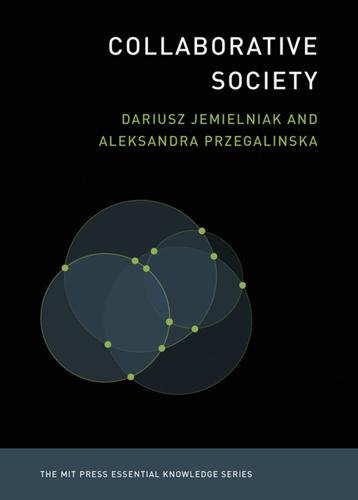
Collaborative Society
by
Dariusz Jemielniak
and
Aleksandra Przegalinska
Published 18 Feb 2020
In this section we offer a brief typology of commonly used terms related to the topic and categorize them based on the monetary or nonmonetary orientation of platforms and users. Let’s begin by looking into the premise behind “sharing.” As we commonly understand it, sharing involves no monetary exchange: this is certainly true of Linux or OpenStreetMap but clearly not of Uber or Airbnb. Here’s an example of sharing from everyday life to further illustrate our point: If two roommates use the same hairdryer, they share. If one of them wants to charge the other for the privilege, we can safely predict that this refusal to share is likely to change the dynamic between the roommates.
…
The commonly used terms shown below in bold often align themselves according to this divide: Table 2.1 Profit-maximization-oriented users/producers Nonprofit-oriented users/producers Capitalist platform Platform capitalism, gig economy Uber, Airbnb, TaskRabbit, Turo Collaborative economy TripAdvisor, Yelp, Couchsurfing, 9GAG Quantified Self Cooperativist platform Online cooperatives Time banks (Timebank.cc, Hourworld.org) Food co-ops Peer-to-peer lending Peer production Wikipedia, Linux, OpenStreetMap Citizen science Online activism #MeToo, Occupy Wall Street Biohacking We believe that many of these examples refer to the phenomena of open collaboration or collaborative consumption, but neither term, sharing economy nor peer production, adequately covers their scope. As we see it, the significant change occurring in the society, apparent in the above phenomena, relates first and foremost to people’s universal drive to collaborate; we also believe that this drive has been significantly magnified and enabled by the new internet platforms and tools.
…
The internet then becomes both “playground and factory” and a large resource of free labor.41,42 Considering that the results of this unpaid, voluntary work are material, we must ask whether the benefits enter the common pool or build a commercial competitive advantage when producers and consumers become one and the same, or prosumers. As George Ritzer and Nathan Jurgenson warn, prosumer capitalism, in its dependence on digital technologies, relies on new forms of exploitation through unpaid work gamified as fun.43 A study of the OpenStreetMap project—run by a community of enthusiasts who collectively create maps using Apache software on an open license—shows that participation in (and as) a community rank high in the motivations of active users.44 But in many cases the “participation” does not necessarily mean doing something simultaneously together, with a division of labor and an awareness of other participants.
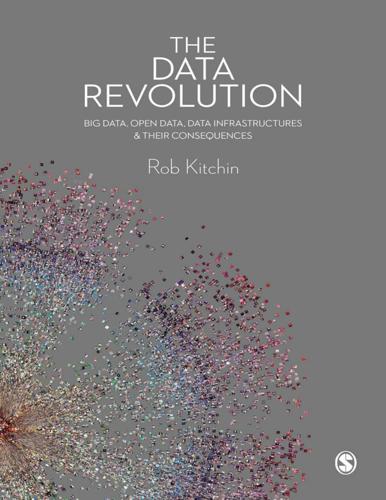
The Data Revolution: Big Data, Open Data, Data Infrastructures and Their Consequences
by
Rob Kitchin
Published 25 Aug 2014
Carr contends that ‘if Wikipedia weren’t free, it is unlikely its readers would be so forgiving of its failings’ (2007: 4). OpenStreetMap can suffer from a lack of coverage in some areas where there are few volunteers. There are also concerns as to the sustainability of volunteered crowdsourced labour, with Carr (2007) arguing that the connections that bind a virtual crowd together are often superficial, lacking depth and obligatory commitment, are liable to dispersion, and are reliant on a small core group to keep the project going and provide the bulk of the labour. In contrast, others have noted with respect to OpenStreetMap, that the quality of data produced matches that of professional companies, and that the coverage is diverse (Haklay 2010; Mooney et al. 2011).
…
Even if the e-mail is downloaded locally and deleted it is still retained on the server, with most institutions and companies keeping such data for a number of years. Like other forms of data, spatial data has grown enormously in recent years, from real-time remote sensing and radar imagery, to large crowdsourced projects such as OpenStreetMap, to digital spatial trails created by GPS receivers being embedded in devices. The first two seek to be spatially exhaustive, capturing the terrain of the entire planet, mapping the infrastructure of whole countries and providing a creative commons licensed mapping dataset. The third provides the ability to track and trace movement across space over time; to construct individual time–space trails that can be aggregated to provide time–space models of behaviour across whole cities and regions.
…
As a consequence, vast quantities of data are routinely generated concerning interactions across ICT networks Volunteered data In contrast to surveillance that is either directed at people or things by individuals and agencies, or are captured automatically as an inherent feature of a device or system, much big data are actively volunteered by people. In such cases, individuals generate and input data and labour either to avail themselves of a service (such as social media) or to take part in a collective project (such OpenStreetMap or Wikipedia). Such labour has been called prosumption as the modes of production and consumption have been partially collapsed onto one another, with individuals assuming a role in the production of the service or product they are consuming (Ritzer and Jurgenson 2010). For example, the content of a social media site is simultaneously produced and consumed by individual users inputting comments, uploading photos and videos, and engaging in discussion and the exchange of sentiment (‘liking’ or ‘disliking’ something).

Maphead: Charting the Wide, Weird World of Geography Wonks
by
Ken Jennings
Published 19 Sep 2011
Google, to its credit, gave the United Nations full access to the usually proprietary data in its collaborative Map Maker tool, but the real hero of the hour was the OpenStreetMap project, an open-source alternative to Map Maker. OpenStreetMap is essentially the Wikipedia of maps: anyone can use it, anyone can change it in real time, and its data is free and uncopyrighted in perpetuity. When the earthquake struck, late Tuesday afternoon, Haiti was a white void in OpenStreetMap. Within hours, thousands of amateur mappers were collaborating all over the world, adding roads and buildings from aerial imagery to the database, until every back alley and footpath in Port-au-Prince had been charted.
…
Relief workers updated the maps with traffic revisions, triage centers, and refugee centers, and just days later, the volunteer-drawn map was the United Nations’ go-to source of transportation information. “Many thanks to all crisis mappers for great contributions,” posted UNICEF emergency officer Jihad Abdalla. “You made my life much easier, since I’m a one-man show here . . . million thanks.” Port-au-Prince, as it looked in OpenStreetMap when the earthquake hit and the way it looked a week later After reading about the lives saved in Haiti by OpenStreetMap, I used it to look at my own neighborhood and found that the cul-de-sac we live on was also missing from the map. After hesitating a moment—is it really okay to draw on a map?—I added and labeled my street by hand, Wikipedia-style. It was a surprising rush to add something new, however trivial, to the world’s sum of geographical knowledge.* For a brief moment, I was Captain Cook charting the New Zealand coastline, a veritable Stanley of the suburbs.
…
Also available in Australia from McArthur Maps, 208 Queens Parade, North Fitzroy, 3068, Australia; phone: 0011 614 3155 5908; e-mail: stuartmcarthur@hotmail.com. Further credits: Images on page 66 courtesy of NASA; map on page 81 courtesy of Altea Gallery (www.alteagallery.com); map on page 118 © Dragonsteel Entertainment, LLC; photograph on page 118 © Mayang Murni Adnin; photograph on page 171 by Jim Payne; images on page 230 © OpenStreetMap and contributors, CC-BY-SA For my parents. And for the kid with the map. CONTENTS Chapter 1: ECCENTRICITY Chapter 2: BEARING Chapter 3: FAULT Chapter 4: BENCHMARKS Chapter 5: ELEVATION Chapter 6: LEGEND Chapter 7: RECKONING Chapter 8: MEANDER Chapter 9: TRANSIT Chapter 10: OVEREDGE Chapter 11: FRONTIER Chapter 12: RELIEF Notes Index MAPHEAD Chapter 1 ECCENTRICITY n.: the deformation of an elliptical map projection My wound is geography.
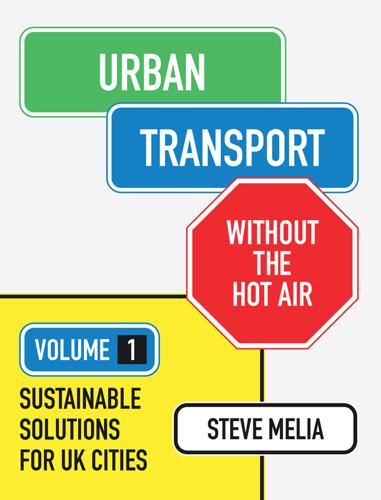
Urban Transport Without the Hot Air, Volume 1
by
Steve Melia
Harmondsworth: Penguin Books. 270 DfT (2012) ‘Transport statistics Great Britain’, Table VEH0153, divided by midyear population statistics from: ONS (2011) ‘Mid-1971 to Mid-2010 Population Estimates: United Kingdom; estimated resident population for constituent countries and regions’. Both on: www.gov.uk I am grateful to Professor Phil Goodwin who brought this to my attention, in one of his fascinating presentations about ‘peak car’. 271 Openstreetmap data is crowd sourced, ie it is created by thousands of volunteers. It is made available under the Open Database License. See www.openstreetmap.org for more information on this valuable resource. 272 DfT (2014) Transport statistics Table CGN0206a 273 Bristol City Council (2012) ‘Public realm and movement framework consultation draft’. On: www.bristol.gov.uk 274 Department for Business, Innovation and Skills and DfT (2014) ‘UK government fast tracks driverless cars’.
…
The traffic jam, which recedes into the distance, is typical of the in-bound congestion at that end of the motorway in the morning rush hour. Buses are forced to wait in the traffic jam before they can reach the bus lane. Figure 11.4 Traffic jam on the M32 heading towards Bristol city centre in the morning rush hour Figure 11.5 Map of central Bristol (© Open-streetmap contributors271) Most of that in-bound traffic is heading for destinations within the central areas of the city, so widening the motorway or the ring road might move congestion from one place to another, but to significantly reduce it the number of vehicles heading into central Bristol would also have to be reduced.
…
Comparing Figure 13.1 with the map of central Milton Keynes (Figure 13.4) illustrates one of the reasons for this: in LLN the roads fit round the pedestrian paths but in Milton Keynes it is the other way round. Figure 13.2 Pedestrian paths at the front of houses in LLN Figure 13.3 Rear car parking Figure 13.4 Central Milton Keynes (© Openstreetmap contributors) – pedestrian and cycle ‘Red Routes’ are dotted Another important difference is the density of development. Conventional wisdom at the time (particularly in Britain and North America310) associated high density with slums and social problems. As a result, the English New Towns were planned to remove people from the major cities, and rehouse them at lower densities.311 Woitrin resisted this fashion, arguing that interactions – between teachers and students, different cultures, old and young – were essential to make the new town work, and this called for higher densities, to be provided by flats rather than houses.
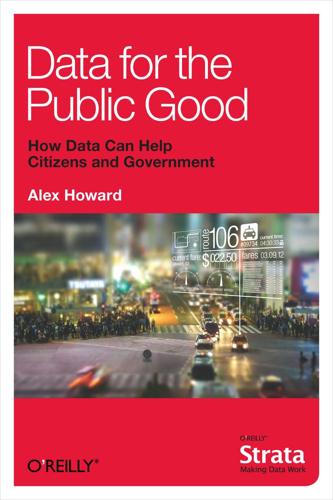
Data for the Public Good
by
Alex Howard
Published 21 Feb 2012
A web application from ESRI deployed during historic floods in Australia demonstrated how crowdsourced social intelligence provided by Ushahidi can enable emergency social data to be integrated into crisis response in a meaningful way. The Australian flooding web app includes the ability to toggle layers from OpenStreetMap, satellite imagery, and topography, and then filter by time or report type. By adding structured social data, the web app provides geospatial information system (GIS) operators with valuable situational awareness that goes beyond standard reporting, including the locations of property damage, roads affected, hazards, evacuations and power outages.
…
After the devastating 2010 earthquake in Haiti, the evolution of volunteers working collaboratively online also offered a glimpse into the potential of citizen-generated data. Crisis Commons has acted as a sort of “geeks without borders.” Around the world, developers, GIS engineers, online media professionals and volunteers collaborated on information technology projects to support disaster relief for post-earthquake Haiti, mapping streets on OpenStreetMap and collecting crisis data on Ushahidi. Healthcare What happens when patients find out how good their doctors really are? That was the question that Harvard Medical School professor Dr. Atul Gawande asked in the New Yorker, nearly a decade ago. The narrative he told in that essay makes the history of quality improvement in medicine compelling, connecting it to the creation of a data registry at the Cystic Fibrosis Foundation in the 1950s.

Connectography: Mapping the Future of Global Civilization
by
Parag Khanna
Published 18 Apr 2016
NATIONAL GEOSPATIAL-INTELLIGENCE AGENCY https://nga.maps.arcgis.com/home/ The National Geospatial-Intelligence Agency provides public access to large volumes of satellite and other geo-data and imagery in support of scientific research, natural disaster recovery operations, and crisis management. NORSE ATTACK MAP http://map.norsecorp.com/ Norse, a cyber-threat analysis firm, provides real-time visualizations of global cyber war based on data collected every second from Internet and Dark Web sources, plotting origins of attackers and target attacks. OPENSTREETMAP https://www.openstreetmap.org/ OpenStreetMap is a crowdsourced mapping platform maintained by a user community that constantly updates data on transportation networks, store locations, and myriad other content generated and verified through aerial imagery, GPS devices, and other tools. PLANET LABS https://www.planet.com/ Planet Labs uses a network of low-orbit satellites to capture the most current images of the entire earth and form composite digital renderings that can be used for commercial or humanitarian applications.
…
In the 1980s, GPS technology firms began painstakingly driving and geo-coding roads all over the world, building up databases for the suites of navigational tools that are now in almost every new car’s dashboard. Google soon joined the fray, adding more satellite imagery and street views. Today every individual can become a digital cartographer: Maps have gone from Britannica to Wiki. OpenStreetMap, for example, crowdsources street views from millions of members who can also tag and label any structure, infusing local knowledge and essential insight for everything from simple commuting to delivering supplies during humanitarian disasters.*1 We can now even insert updated imagery from Planet Labs’ two dozen shoe-box-size satellites into 3-D maps and fly through the natural or urban environment.
…
Created by University of Wisconsin–Madison Cartography Laboratory. Guardian; Natural Earth. pai1.15 Singapore Expands its Economic Geography. Created by University of Wisconsin–Madison Cartography Laboratory. Global Administrative Areas; Indosight.com; Iskandar Malaysia; Natural Earth; Noun Project; OpenStreetMap. pai1.16 Eurasia’s New Silk Roads. Map created by Jeff Blossom. Natural Earth; Theodora; Wikipedia; World Resources Institute. pai1.17 Pax Arabia. Map created by Jeff Blossom. Desertec; DII; Natural Earth; Theodora; World Resources Institute. pai1.18 Pax Aseana. Map created by Jeff Blossom.

Smart Cities: Big Data, Civic Hackers, and the Quest for a New Utopia
by
Anthony M. Townsend
Published 29 Sep 2013
The effort has since expanded around the world, and in poor countries often rivals the government’s own maps. After the 2010 Haiti earthquake, which obliterated the nation’s mapping agency in a building collapse, OpenStreetMap provided essential data to relief organizations. The Indian activists who pioneered slum mapping in the 1990s saw their work as a way to begin integrating poor communities into existing city-planning efforts in the hope of securing a fairer share of government resources. But with the new chart living online in OpenStreetMap, Map Kibera is focused instead on powering new tools that change how the community is represented in the media, and how organizers lobby the government to address local problems.
…
By the early 2000s, artists and hobbyists in England had discovered that by plotting the position logs recorded by personal GPS navigators they could quickly collect the data required to re-create a digital base map of the street grid. Inspired by Wikipedia’s model of collaborative knowledge production, in 2004 British computer scientist Steve Coast launched OpenStreetMap. Suddenly, anyone could upload a record of his or her movements along the nation’s road network. By systematically traveling the streets of every city, town, and village in the United Kingdom, an army of volunteers set out to make a freely-usable map. As of 2013, after years of collective surveying and annotation, the crowdsourced street map of England was finally nearing completion.
…
As Heeks argues, “In a globalized world, the problems of the poor today can, tomorrow—through migration, terrorism, and disease epidemics—become the problems of those at the pyramid’s top.”50 This brings us to the final dilemma: crowdsourcing and the future role of government in delivering basic services. In smart cities, there will be many new crowdsourcing tools that, like OpenStreetMap, create opportunities for people to pool efforts and resources outside of government. Will governments respond by casting off their responsibilities? In rich countries, governments facing tough spending choices may simply withdraw services as citizen-driven alternatives expand, creating huge gaps in support for the poor.
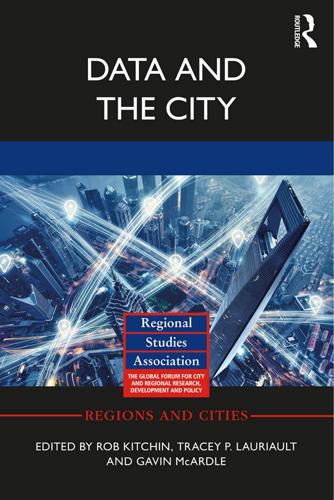
Data and the City
by
Rob Kitchin,Tracey P. Lauriault,Gavin McArdle
Published 2 Aug 2017
These are being complemented with big data generated by: (a) commercial companies such as mobile phone operators (location/movement, app use, activity), travel and accommodation sites (reviews, location/movement, consumption), social media sites (opinions, photos, personal info, location/movement), transport providers (routes, traffic flow), website owners (clickstreams), financial institutions and retail chains (consumption, in-store movement, location), and private surveillance and security firms (location, behaviour) that are increasingly selling and leasing their data through data brokers, or making their data available through APIs (e.g. Twitter and Foursquare); (b) crowdsourcing (e.g. OpenStreetMap) and citizen science (e.g. personal weather stations) initiatives, wherein people collaborate on producing a shared data resource or volunteer data. Other kinds of more irregular urban big data include digital aerial photography via planes or drones, or spatial video, LiDAR (light detection and ranging), thermal or other kinds of electromagnetic scans of environments that enable the mobile and realtime 2D and 3D mapping of landscapes.
…
The emergence of community/crowd/user-generated digital maps (Haklay et al. 2008) provide some evidence for activities that, at their worst, fall into the trap of a device paradigm and at their best demonstrate the potential of new focal practices that are facilitated by technology. Projects such as OpenStreetMap (OSM) (Haklay and Weber 2008) exhibit complex relationships between the contributor to the mapping product and the user of the map in terms of their understanding of data, as well as making decisions about what will be captured and how. For the OSM mapper, who is commonly interested in her local area and walks through it to record specific objects, the process of mapping is an example of a novel way to engage with the world (Budhathoki and Haythornthwaite 2013).
…
Budhathoki, N.R. (2010) ‘Participants’ motivations to contribute geographic information in an online community’, doctoral dissertation, University of Illinois at Urbana-Champaign. Budhathoki, N.R. and Haythornthwaite, C. (2013) ‘Motivation for open collaboration crowd and community models and the case of OpenStreetMap’, American Behavioral Scientist 57(5): 548–575. Chourabi, H., Nam, T., Walker, S., Gil-Garcia, J.R., Mellouli, S., Nahon, K., Pardo, T. and Scholl, H.J. (2012) ‘Understanding smart cities: an integrative framework’, in System Science (HICSS) 2012 45th Hawaii International Conference, pp. 2289–2297.

This Is for Everyone: The Captivating Memoir From the Inventor of the World Wide Web
by
Tim Berners-Lee
Published 8 Sep 2025
Aleks Krotoski, their journalist, was the lead on an expedition to see whether the stories of abundant internet cafes and farmers online were true. It was fun driving around the jungle in the BBC’s little blue Land Rover. We talked to young people in villages who had good English and online friends in the USA. I encouraged them to blog about their own world and to put their own town on openstreetmap.org. We noticed that there was mobile data signal at the top of each hill, even in rural areas. But we also saw that smartphones and data plans were too expensive for most: an issue the Web Foundation would later address. Later that year, we travelled to Uganda, where the government put on a very big show of it.
…
Apple’s business model is selling devices, not data. Similarly, if you collaborate with people by sharing a Dropbox account, then Dropbox makes its money from premium subscribers who subsidize the free accounts – not from selling user data. When people use open-source apps like LibreOffice and OpenStreetMap, they know that there is a community of people reviewing the source code to ensure it is trustworthy. Someone recently said that they would never trust a company with their data. But would you trust your bank with your data? I trust it with my money, so I have to trust it with my data. In the same way that there is a lot of financial regulation for banks, there are privacy regulations that apply to companies that store any of your data.
…
Nash ref1, ref2 digital commons ref1 digital divide ref1 Digital Equipment Corporation (DEC) ref1 digital signatures ref1 dishwasher poem (GPT-4) ref1 disinformation ref1, ref2 Ditchley Foundation ref1, ref2, ref3, ref4 DNS (Domain Name System) ref1, ref2, ref3 documentation systems ref1, ref2 documents compared to data ref1 doomscrolling ref1, ref2 dot-com bubble ref1, ref2, ref3 dot-matrix printers ref1 Doubleclick ref1 Dougherty, Dale ref1 Dow Jones ref1 Dropbox ref1 e-commerce ref1 E-Trade ref1 East Sheen, London ref1 ECMAScript ref1 Edelman, Richard ref1 Edelman Trust Barometer ref1 Edge ref1 Egypt ref1 eigenvectors 151n Elbaz, Gil ref1 electromagnets ref1 Electronic Frontier Foundation (EFF) ref1, ref2, ref3 Elizabeth II ref1, ref2, ref3, ref4 email ref1, ref2 Emanuel School ref1, ref2, ref3 encryption ref1, ref2, ref3, ref4 engagement, algorithms ref1, ref2, ref3, ref4 Engelbart, Douglas ref1, ref2 Enigma cipher ref1 ‘Enquire-within’ program ref1, ref2, ref3 Enquire Within Upon Everything ref1 equality ref1 Equifax ref1 error codes ref1 Erwise ref1 Eternal September ref1 Ethiopia ref1 Euler’s formula ref1 European Commission ref1 European Computer Manufacturers Association (ECMA) ref1 European Council for Nuclear Research see CERN European Semiconductor Equipment Company ref1 European Union Brexit ref1 GDPR (General Data Protection Regulation) ref1, ref2 Ex Machina (film, 2014) ref1 Excite ref1 Expedia ref1 Facebook advertisements ref1 Africa ref1 AI training ref1 Arab Spring ref1 collaborative filtering and polarization ref1, ref2 data breaches ref1 data ownership ref1 microtargeting ref1 users as the product ref1, ref2 facts, encoding ref1, ref2 farming ref1 Fediverse ref1, ref2, ref3 Fermilab ref1 Ferranti ref1, ref2, ref3 Ferranti, Basil de ref1 File Transfer Protocol (FTP) ref1, ref2 Filo, David ref1 Finland ref1 Firefox ref1, ref2 First Parish Church, Lexington ref1 Flametree ref1 Flanders ref1, ref2 Fora ref1 Ford Foundation ref1 Forth (programming language) ref1 forums ref1 Foster, Norman ref1 free speech ref1 Freud, Lucien ref1 Friendster ref1 Fry, Stephen ref1 Gal, Yarin ref1 Gallaudet University ref1, ref2 garbage in, garbage out ref1 Gates, Bill ref1, ref2, ref3, ref4 GDPR (General Data Protection Regulation) ref1, ref2 GEC ref1 Gemini ref1 generalization ref1 Geneva ref1, ref2, ref3, ref4, ref5 Geneva Amateur Operatic Society (GAOS) ref1 genome-sequencing providers ref1 Geocities ref1 geospatial mapping ref1 Ghana ref1 Gifford, David ref1 GIFs ref1, ref2 Gilliat, Bruce ref1 Gilmore, John ref1 Gilyard-Beer, Peter ref1 Glasswing ref1, ref2 Global News Network (GNN) ref1 Gmail ref1 Go (game) ref1, ref2 Gods of Literature ref1, ref2 Goldstein, Jono ref1, ref2 Google AJAX ref1 anti-trust lawsuits ref1 Applied Semantics purchase ref1 China ref1 Chrome ref1 DeepMind ref1 Gemini ref1, ref2 Gmail ref1 Google Docs ref1 Google Maps ref1, ref2 Google Meet ref1 hosted web anniversary dinner ref1 HTML and WHATWG ref1 passkeys ref1 search functionality ref1, ref2 standards ref1 start-up ref1 transformers ref1 users as the product ref1 Web Index ref1 Zeitgeist network event ref1 Google Maps ref1, ref2 Gopher ref1, ref2 Gore, Al ref1, ref2, ref3, ref4 government data ref1, ref2, ref3 governments and Contract for the Web ref1, ref2, ref3 GPS data ref1, ref2 GPTs (Generative Pre-trained Transformers) ref1, ref2, ref3, ref4 GPUs (Graphical Processing Units) ref1 Grail ref1 graph structures ref1, ref2 Great Firewall of China ref1, ref2 Greif, Irene ref1 Grisham, John ref1 Grok AI ref1 Grundy, Frank ref1, ref2 hacktivism ref1 Hall, Justin ref1 Halonen, Tarja ref1 Hanamura, Wendy ref1 haptic touch ref1 Harari, Yuval Noah ref1, ref2 Hardin, Joseph ref1, ref2, ref3 Harris, Kamala ref1 Harris, Tristan ref1 Harrison, George ref1 Harvard Berkman Klein Center for Internet and Society ref1, ref2 Institute for Rebooting Social Media ref1 Hassabis, Demis ref1, ref2 Hawke, Sandro ref1 Helsinki ref1 Helsinki University of Technology ref1 Hendler, Jim ref1 Herzberg, Frederick ref1 Heywood, Jeremy ref1 Hickson, Ian (Hixie) ref1, ref2 hierarchies ref1 Higgins, Eliot ref1 Higgs boson ref1 Higgs, Peter ref1 Hinton, Geoffrey ref1 holiday bookings ref1, ref2 Home Depot ref1 home pages ref1 Hoogland, Walter ref1, ref2 Hoschka, Philipp ref1, ref2 HTML (Hypertext Markup Language) ref1, ref2, ref3, ref4, ref5, ref6 HTTP (Hypertext Transfer Protocol) ref1, ref2, ref3, ref4, ref5 HTTPS standard ref1 human first systems ref1 human rights ref1, ref2, ref3, ref4, ref5, ref6 see also civil liberties humans as social animals ref1 HyperCard ref1 hyperlinks ref1, ref2, ref3, ref4, ref5, ref6, ref7, ref8 hypertext ref1, ref2, ref3 see also HTML Hypertext ‘91 conference ref1 Hypertext ‘93 conference ref1 Ibargüen, Alberto ref1 IBM, Watson ref1 identity theft ref1 IETF (Internet Engineering Task Force) ref1, ref2, ref3 images GIFs ref1, ref2 IMG tag ref1 PNG (Portable Network Graphics) ref1 Imitation Game, The (film, 2014) ref1 ‘Imitation Game’ (Turing) ref1, ref2 inclusivity ref1, ref2 India ref1, ref2 indigenous communities, land rights ref1 Industrial Revolution ref1 Inflection.AI ref1 Infosys ref1 infrastructure evolution ref1 INRIA (National Institute for Research in Digital Science and Technology), France ref1, ref2 Inrupt ref1, ref2, ref3, ref4 Instagram ref1, ref2, ref3 Institute for Rebooting Social Media ref1 integrated circuits ref1 intellectual property rights ref1, ref2 intelligence agencies ref1, ref2 intention economy ref1, ref2, ref3, ref4 intercreativity ref1, ref2, ref3, ref4 International Standards Organization (ISO) ref1 internet Al Gore funding bill ref1, ref2 blackouts ref1 deep web ref1 early development ref1 early functionality ref1 free ethos ref1, ref2, ref3 Map of Everything ref1, ref2, ref3 protocols ref1, ref2 size ref1 universal access ref1, ref2 see also World Wide Web Internet Archive ref1, ref2 Internet Explorer ref1, ref2, ref3, ref4, ref5 internet service providers (ISPs) ref1, ref2, ref3 interoperability ref1, ref2, ref3, ref4, ref5 Intuit ref1 invisible pixels ref1 IP addresses ref1, ref2, ref3 iPhone ref1, ref2, ref3 Iran ref1 ITT ref1 Jambon, Jan ref1 Java ref1 JavaScript ref1, ref2, ref3 Jitsi ref1 Jobs, Steve ref1, ref2, ref3, ref4, ref5, ref6, ref7 Jones, Peter ref1 JScript ref1 JSTOR ref1 Justin’s Links from the Underground ref1, ref2 Kagame, Paul ref1 Kahle, Brewster ref1, ref2 Kahn, Bob ref1, ref2 Kapor, Mitch ref1 Keio University, Tokyo ref1 Kendall, Alex ref1 Kenya ref1 killer apps ref1 Kirk, Anna ref1 Kirk, Matthew ref1 Knight Foundation ref1 Kotok, Alan ref1 Krotoski, Aleks ref1 Kubrick, Stanley ref1 Kunz, Paul ref1 Kurzweil, Ray ref1 labelling reality or fakes ref1 land rights ref1 LANs (Local Area Networks) ref1 Larkin, Philip ref1 Lassila, Ora ref1 Last.fm ref1 Le Corbusier ref1 LeCun, Yann ref1 Legal Information Institute (LII) ref1, ref2 Legg, Shane ref1 legislation Data Use and Access Bill ref1 GDPR (General Data Protection Regulation) ref1, ref2 mobile phone spectrum ref1 open data ref1 Leighton, Tom ref1 Leith, Rosemary (wife) Berkman Klein Center for Internet and Society ref1 investments ref1 marriage to Tim ref1 sailing ref1, ref2 visits Beijing ref1 web anniversary speech ref1 Web Foundation ref1, ref2, ref3 Lenat, Doug ref1 Lessig, Lawrence ref1 Lewin, Daniel ref1 Li, Angel ref1 liability of hosts ref1 Library of Alexandria ref1, ref2 Library of Congress ref1 LibreOffice ref1 Libya ref1 Lie, Hakon ref1, ref2, ref3 lifeloggers ref1, ref2 lists ref1 Literature, Gods of ref1, ref2 LLMs (Large Language Models) ref1, ref2, ref3, ref4 LocalFirst Community ref1 location data ref1 logic agents ref1, ref2 logic gates ref1, ref2, ref3 London 2012 Olympics ref1, ref2 Lovett, Adrian ref1 Lycos ref1 Lynx ref1 Ma, Jack ref1, ref2 Mac OS X ref1 MacArthur Fellowship ref1 McBryan, Oliver ref1 McCahill, Mark ref1 McCartney, Paul ref1, ref2 McCourt, Frank ref1 machine learning collaborative filtering ref1 neural networks ref1, ref2 see also artificial intelligence machine translation ref1 McManus, Richard ref1 MacWWW ref1 Malamud, Carl ref1 Mandelbrot ref1 maps geospatial mapping ref1 Google Maps ref1, ref2 Map of Everything on the Internet ref1, ref2, ref3 OpenStreetMap ref1, ref2 World Wide Web Middle Earth ref1 Marcos, Bongbong ref1 Markey, Ed ref1, ref2 Martin, George R. R. ref1 MasterCard ref1 Mastodon ref1, ref2 mathematics ref1, ref2, ref3, ref4 Matrix ref1 media industry ref1 mental health and social media ref1, ref2, ref3 ‘Mesh’ memo ref1 Meta ref1, ref2, ref3 see also Facebook metadata ref1 metasystems ref1 Metaverse ref1 Metcalf, Bob ref1 MeWe ref1 micropayments ref1 microprocessors ref1, ref2 Microsoft ActiveX ref1 Clippy ref1 Copilot ref1 copyright infringement ref1 early lack of browser ref1 Internet Explorer ref1, ref2, ref3, ref4, ref5 MS-DOS ref1 Office ref1 standards ref1, ref2 Teams ref1 XML ref1 Microsoft Exchange Server ref1 microtargeting ref1, ref2 Middle Earth ref1 Middle Earth map ref1 military applications ref1 Millennium Technology Prize ref1 Miller, Kaia ref1 Minnesota, University of ref1, ref2 misinformation ref1, ref2 MIT Center for Constructive Communication ref1 Computer Science and Artificial Intelligence Lab (CSAIL) ref1, ref2 speaking tours ref1 Tim Berners-Lee’s arrival ref1 Tim Berners-Lee’s early visits ref1, ref2 World Wide Web Consortium (W3C) ref1, ref2, ref3 mobile phones CSS (cascading style sheets) ref1 licences legislation ref1 touchscreens ref1 see also smartphones model railway ref1 modems broadband ref1 dial-up ref1, ref2 download speeds ref1, ref2 Moffat, John ref1, ref2, ref3 monopolization ref1, ref2, ref3, ref4, ref5, ref6 Montulli, Lou ref1 moon landings ref1 Moore’s Law ref1 Morsi, Mohammed ref1 Mosaic browser ref1, ref2, ref3, ref4 ‘The Mother of all Demos’ (Engelbart) ref1 motivation-hygiene theory ref1 Motorola ref1 Mount Stromlo Observatory ref1 Mozilla foundation ref1, ref2, ref3 MP3s ref1 Mubarak, Hosni ref1 multimedia ref1, ref2 Murthy, Vivek ref1 music collaboration ref1 copyright ref1 illuminated Italian Renaissance website ref1 MP3s ref1 recommendation services ref1, ref2 Tim Berners-Lee’s interest ref1 Musk, Elon ref1, ref2 MyData ref1 MySpace ref1 Myst (game) ref1 narrowcasting ref1, ref2, ref3 National Science Foundation ref1 National Theatre, London ref1 Naver Maps ref1 NCSA (National Center for Supercomputing Applications) ref1, ref2, ref3, ref4, ref5, ref6 Nelson, Ted ref1, ref2 neoliberalism ref1 net neutrality ref1, ref2, ref3 Netflix ref1, ref2 netiquette ref1 Netscape ref1, ref2, ref3, ref4, ref5, ref6 networking fractal ref1 humans as social animals ref1 neural networks ref1, ref2, ref3, ref4 URLs ref1 New York Times, The ref1, ref2, ref3 Newmark, Craig ref1 news organizations ref1 newsgroups ref1, ref2 NeXT ref1, ref2, ref3, ref4, ref5, ref6, ref7, ref8 NFT of original WWW code ref1 Ng, Andrew ref1 NHS ref1, ref2 Nigeria ref1 Nilekani, Nandan ref1 9/11 attacks ref1, ref2 Nix, Alexander ref1 Nobel Prize ref1, ref2, ref3, ref4 Nokia ref1 nuclear weapons ref1 Nupedia ref1 Nvidia ref1, ref2 Objective-C code ref1 Olympics, 2012 London ref1, ref2 Ong, Jonathan Corpus ref1 Open Data Institute (ODI) ref1, ref2, ref3, ref4 see also Solid open-source software ref1, ref2, ref3, ref4, ref5, ref6 Open Systems Interconnection (OSI) ref1 OpenAI ref1, ref2, ref3, ref4, ref5 OpenStreetMap ref1, ref2 Opera browser ref1, ref2, ref3, ref4 Opzoomer, Indi (Leith) ref1 Opzoomer, Jamie (Leith) ref1 Opzoomer, Lyssie (Leith) ref1 Order of Merit of the British Empire ref1, ref2 O’Reilly ref1, ref2, ref3 Oxford University ref1, ref2, ref3, ref4 PACER ref1 packet-switching ref1 Page, Larry ref1, ref2 PageRank ref1 pantomime ref1 ‘paperclip maximizer’ ref1 paradigm shift, artificial intelligence (AI) ref1 passkeys ref1 passwords ref1 patents ref1 peace ref1 Pellow, Nicola ref1 Penrose, Roger ref1 Pentagon ref1, ref2, ref3 Pets.com ref1 philanthropy ref1 Philippines ref1 photographs, metadata ref1 physics ref1, ref2 pi.ai ref1 Pinterest ref1, ref2 Pioch, Nicolas ref1 plagiary ref1 Plessey ref1, ref2, ref3 Plewe, Brandon ref1 PNG (Portable Network Graphics) ref1 podcasts ref1 PODS (Personal Online Data Stores) ref1, ref2, ref3, ref4, ref5, ref6 polarization ref1, ref2, ref3, ref4, ref5, ref6 Polis ref1 Pollerman, Bernd ref1 Polly, Jean Armour ref1 Poole ref1 Pordes, Ruth ref1 Postel, Jon ref1 Postscript language ref1 Priceline ref1 printers, dot-matrix ref1 printing presses ref1, ref2 privacy apps ref1 Contract for the Web ref1, ref2 data sovereignty ref1, ref2, ref3, ref4, ref5, ref6, ref7, ref8 location data ref1 MyData ref1 principle ref1, ref2 regulations ref1 RSA system ref1 Solid ref1, ref2 Prodigy ref1 programming languages ECMAScript ref1 HTML5 ref1 Java ref1 Objective-C ref1 Python ref1, ref2 Timpl ref1 Unix ref1 see also HTML Project Liberty ref1 protein-folding ref1, ref2 protocols CERN ref1 internet ref1, ref2 open ref1 see also HTTP; Solid provenance ref1 Prud’hommeaux, Eric ref1 public-key encryption ref1, ref2, ref3 punting ref1 Purnell, ‘Daffy’ ref1 Putz, Steve ref1 Python ref1, ref2, ref3, ref4, ref5 quantum mechanics 151n queuing theory ref1, ref2 Quicken ref1 Quint, Vincent ref1 Raggett, Dave ref1, ref2 RAGs (Retrieval-Augmented Generation systems) ref1 railway, model ref1 The Ranch ref1 Raytheon ref1 RDF (Resource Description Format) ref1, ref2 read–write web ref1 Readers ref1, ref2 RECAP ref1 Reddit ref1, ref2, ref3 religion ref1, ref2, ref3 retail sites ref1, ref2 Richmond Park ref1 Rimmer, Peggie ref1, ref2, ref3, ref4, ref5, ref6 Rivest, Ron ref1, ref2 Rogers, Kevin ref1, ref2 Rouse, Paul ref1, ref2 Royal Society ref1 RSA system ref1, ref2, ref3, ref4 RSS (Really Simple Syndication) ref1, ref2 running ref1, ref2 Rwanda ref1 Safari ref1, ref2 Sahel ref1 sailing ref1, ref2 Sainsbury’s ref1 Sandberg, Sheryl ref1 Sanger, Larry ref1 Sawadogo, Yacouba ref1 Scheifler, Bob 118n Schneier, Bruce ref1 schools ref1, ref2, ref3 science fiction ref1, ref2, ref3 Science Museum, London ref1 search engines ref1, ref2, ref3, ref4, ref5 see also Google Searls, Doc ref1 Second Life ref1 secure systems ref1 Segal, Ben ref1, ref2 semantic web Applied Semantics ref1 initial concept ref1 ‘layer cake’ ref1 machine learning ref1 PODS (Personal Online Data Stores) ref1 RDF (Resource Description Format) ref1 semantic winter ref1 Semantic Web Institute ref1 Sendall, Mike ref1, ref2, ref3, ref4, ref5, ref6 Seoul Peace Prize ref1, ref2 server software ref1, ref2 Sesri, Rudina ref1, ref2, ref3, ref4 SGML (Standard Generalized Markup Language) ref1, ref2 Shadbolt, Nigel ref1, ref2 Shamir, Adi ref1 Sheen Mount school ref1 Silicon Valley ref1, ref2 silos ref1, ref2, ref3, ref4 simplified text ref1 singularity ref1 Siri ref1, ref2 skiing ref1, ref2, ref3 Slack ref1 Slashdot ref1 slashdotting ref1 Smarr, Larry ref1 smartphones apps ref1, ref2 children ref1 global growth ref1, ref2 interoperability ref1 Smith, Adam ref1, ref2 Social Dilemma, The (film, 2020) ref1 social media addiction ref1, ref2, ref3, ref4 advertisements ref1, ref2, ref3 algorithms ref1, ref2, ref3, ref4, ref5, ref6 Arab Spring ref1 attention economy ref1, ref2 collaborative filtering and polarization ref1 early development ref1 Institute for Rebooting Social Media ref1 liability of hosts ref1 mental health ref1 mental health issues ref1, ref2 MeWe ref1 silos ref1 social graph ownership ref1 users as the product ref1, ref2 social trust ref1 software copyright development ref1 open-source ref1, ref2, ref3, ref4, ref5, ref6 Solid (Social Linked Data protocol) adoption ref1, ref2, ref3, ref4, ref5 Charlie ref1, ref2 development ref1, ref2 functionality ref1, ref2, ref3 Inrupt ref1 organization and structure ref1 potential ref1 Seoul Peace Prize ref1 server protocol ref1 trust ref1 see also PODS; data wallets Sollins, Karen ref1 Sony ref1 South Korea ref1, ref2 spiders ref1 Spotify ref1, ref2, ref3 Spyglass ref1 standards ref1, ref2, ref3, ref4, ref5 see also protocols; World Wide Web Consortium Stanford Linear Accelerator Center (SLAC) ref1, ref2, ref3 stock brokers ref1, ref2 Stoppard, Tom ref1 Stover, Mr (music teacher) ref1 style sheets ref1, ref2, ref3 Suleyman, Mustafa ref1, ref2, ref3 Sun Microsystems ref1 Sunak, Rishi ref1 superintelligence ref1 surveillance ref1, ref2, ref3, ref4, ref5, ref6 Swick, Ralph ref1 Switzerland ref1, ref2, ref3 T-Mobile ref1 tabulator ref1 tags ref1 Tahrir Square ref1 Taiwan ref1 TCP/IP ref1, ref2 TED talks ref1, ref2, ref3 teleconferencing ref1, ref2, ref3 teletypes ref1 television cathode-ray tubes ref1 closed captioning ref1 Telnet ref1 Tencent ref1 Texas Instruments ref1 text-to-speech services ref1 third-party distribution networks ref1, ref2 This Is For Everyone ref1, ref2 TikTok ref1, ref2 timbl ref1 Time magazine ref1 Timpl ref1 Tolkein, J.
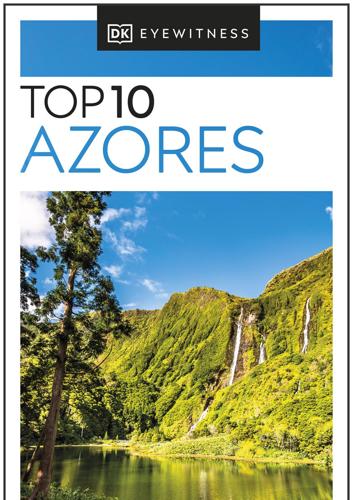
DK Eyewitness Top 10 Azores
by
Dk Eyewitness
Published 22 Dec 2022
Rosa SuperStock: age fotostock /David Muscroft, /Juan Carlos Muñoz; Mauritius/Obert. WestCanyon Turismo Aventura Cover Front and spine: Dreamstime.com: Lukasz Janyst. All other images © Dorling Kindersley For further information see: www.dkimages.com Maps in this book are derived from © OpenStreetMap, see. www.openstreetmap.org/copyright for further. First Edition 2017 Published in Great Britain by Dorling Kindersley Limited DK, One Embassy Gardens, 8 Viaduct Gardens, London SW11 7BW, UK The authorised representative in the EEA isDorling Kindersley Verlag GmbH. Arnulfstr. 124, 80636 Munich, Germany Published in the United States by DK Publishing, 1745 Broadway, 20th Floor, New York, NY 10019, USA Copyright 2017, 2022 © Dorling Kindersley Limited A Penguin Random House Company 22 23 24 25 10 9 8 7 6 5 4 3 2 1 No part of this publication may be reproduced, stored in or introduced into a retrieval system, or transmitted in any form, or by any means (electronic, mechanical, photocopying, recording or otherwise) without the prior written permission of the copyright owner.

No Ordinary Disruption: The Four Global Forces Breaking All the Trends
by
Richard Dobbs
and
James Manyika
Published 12 May 2015
“Innovation in government: Kenya and Georgia,” McKinsey & Company, September 2011. 31. Blair Claflin, “Employees use skills to reduce traffic congestion in Pune,” Cummins Inc., www.cummins.com/cmi/navigationAction.do?nodeId=219&siteId=1&nodeName=Reducing+Traffic+in+Pune&menuId=1050. 32. “Haiti,” Humanitarian OpenStreetMap Team, http://hot.openstreetmap.org/projects/haiti-2. 33. Michael Chui, James Manyika, Jacques Bughin, Richard Dobbs, Charles Roxburgh, Hugo Sarrazin, Geoffrey Sands and Magdalena Westergren, The social economy: Unlocking productivity and value through social technologies, McKinsey Global Institute, July 2012. 34.
…
The much more powerful thing, open data, is making the public aware.”30 Pune, India, uses data analytics to identify accident-prone locations and isolate common factors in accidents (such as the lack of crosswalks or too-short traffic-light cycles) in order to improve the city’s traffic infrastructure.31 The OpenStreetMap project, set up after the 2010 earthquake in Haiti, combined data from different sources and became a critical source of reliable information for government and private aid agencies in delivering supplies to hospitals, triage centers, and refugee camps.32 ACCELERATING ADOPTION It’s not simply that computers run more quickly today.
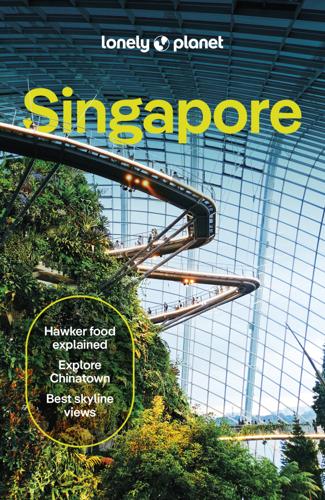
Lonely Planet Singapore
by
Lonely Planet
Published 14 May 2024
Lonely Planet and the Lonely Planet logo are trademarks of Lonely Planet and are registered in the US Patent and Trademark Office and in other countries. Lonely Planet does not allow its name or logo to be appropriated by commercial establishments, such as retailers, restaurants or hotels. Please let us know of any misuses: lonelyplanet.com/legal/intellectual-property. Mapping data sources: © Lonely Planet © OpenStreetMap http://openstreetmap.org/copyright

Lonely Planet Malta & Gozo
by
Lonely Planet
THOMAS SCERRI/SHUTTERSTOCK © “My breakfast of choice in Rabat soon defaulted to pastizzi and sweet, milky tea with the taxi drivers at Is-Serkin.” DEA / A. DAGLI ORTI/DE AGOSTINI VIA GETTY IMAGES © “Even after four visits across 20 years, the astounding Ħal Saflieni Hypogeum still surprises and inspires me.” Mapping data sources: © Lonely Planet © OpenStreetMap http://openstreetmap.org/copyright THIS BOOK Destination Editor Sandie Kestell Production Editor Kate James Book Designer Ania Lenihan Cartographer Dorothy Davidson Assisting Editors Anna Kaminski, Kellie Langdon, Anne Mulvaney, Charlotte Orr Cover Researcher Marc Backwell Thanks Katie Conolly, Karen Henderson, Annemarie McCarthy Published by Lonely Planet Global Limited CRN 554153 10th edition –Mar 2025 ISBN 978 1 83758 746 9 © Lonely Planet 2025 Photographs © as indicated 2025 All rights reserved.
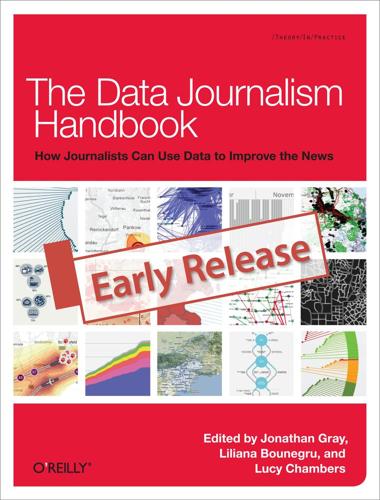
The Data Journalism Handbook
by
Jonathan Gray
,
Lucy Chambers
and
Liliana Bounegru
Published 9 May 2012
It wasn’t long before we started to get requests and enquiries about running similar projects in other countries around the world. Shortly after launching OffenerHaushalt—a version of the project for the German state budget created by Friedrich Lindenberg—we launched OpenSpending, an international version of the project, which aimed to help users map public spending from around the world a bit like OpenStreetMap helped them to map geographical features. We implemented new designs with help from the talented Gregor Aisch, partially based on David McCandless’s original designs. Figure 3-10. OffenerHaushalt, the German version of Where Does My Money Go? (Open Knowledge Foundation) With the OpenSpending project, we have worked extensively with journalists to acquire, represent, interpret, and present spending data to the public.
…
They can be used for data analysis and data visualization, and are both limited to static visualizations. They cannot be used to create interactive charts with tooltips and more advanced stuff. I’m not using MapBox, but I’ve heard it is a great tool if you want to provide more sophisticated maps based on OpenStreetMap. It allows you, for instance, to customize the map styles (colors, labels, etc). There’s also a companion of MapBox, called Leaflet. Leaflet is basically a higher level JavaScript library for mapping that allows you to easily switch between map providers (OSM, MapBox, Google Maps, Bing, etc.).

Lonely Planet Hong Kong
by
Lonely Planet
Forbes Street in Kennedy Town has the best-preserved group of stone wall trees in Hong Kong, with some over 120 years old. SAMURAI R PHOTOGRAPHY/SHUTTERSTOCK © Roaring engines and adrenaline-pumping thrills. Learn about Grand Prix history and get close to racing cars and motorcycles at the Macau Grand Prix Museum. Mapping data sources: © Lonely Planet © OpenStreetMap http://openstreetmap.org/copyright THIS BOOK Destination Editor Darren O’Connell Production Editor Jennifer McCann Book Designer Aomi Ito Cartographer Rachel Imeson Assisting Editors Imogen Bannister, Piera Chen, Anita Isalska, Kate Mathews, Mani Ramaswamy, Clifton Wilkinson Cover Researcher Kat Marsh Thanks Ronan Abayawickrema, Alison Killilea, Bohumil Ptacek Published by Lonely Planet Global Limited CRN 554153 20th edition – Feb 2025 ISBN 978 1 83758 699 8 © Lonely Planet 2024 Photographs © as indicated 2024 All rights reserved.
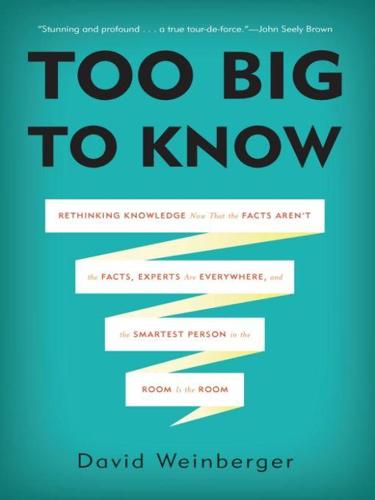
Too Big to Know: Rethinking Knowledge Now That the Facts Aren't the Facts, Experts Are Everywhere, and the Smartest Person in the Room Is the Room
by
David Weinberger
Published 14 Jul 2011
Efforts to relieve the suffering caused by the 2010 Haitian earthquake were hindered by the fact that the streets of Port-au-Prince had never been fully mapped. So, OpenStreetMap.org posted satellite images of the city on its wiki. People from around the world, especially Haitians living elsewhere, started adding in street names. The map was, according to Dickover, “insanely detailed” within just a couple of weeks, and was routinely used by the World Bank, the United Nations, the US Southern Command, the US Marine Corps, the Coast Guard—“anyone who needed to get across town.” By the third week, the World Bank was funding people from OpenStreetMap to train local Haitians in the use of GPS equipment to add more and more local knowledge.

City 2.0: The Habitat of the Future and How to Get There
by
Ted Books
Published 20 Feb 2013
Community-based groups like Shack/Slum Dwellers International have enlisted citizens to conduct their own censuses and create their own maps, which they publish on open online platforms, thereby expanding our collective knowledge of cities. Map Kibera, for instance, used youth volunteers with handheld GPS units and the wiki OpenStreetMap to create a detailed map of the most famous informal settlement in Nairobi. Until Map Kibera, most government maps showed the area as a forest. The project revealed the network of paths and roads and showed locations of churches, clinics, and stores. Residents of Kibera are now using the map as a platform to report uncompleted or badly built government projects, countering official reports and often exposing corruption.

Ghost Road: Beyond the Driverless Car
by
Anthony M. Townsend
Published 15 Jun 2020
While the company is investing its own resources to compile data cities have ignored, it strikes me as an ethically dubious attempt to make cities dependent upon the company’s services in perpetuity. More city-friendly alternatives to Coord’s rent-a-regulation model are being built, too. Washington, DC–based SharedStreets has assembled a registry for street data modeled after OpenStreetMap, a free wiki world map that has served as an alternative to Google’s dominance in online mapping for more than 15 years. Unlike OpenStreetMap, however, SharedStreets is more of a closed commons than an open-source repository. As a data collaborative, SharedStreets provides a secure, trusted forum for cities, mobility operators, and other stakeholders to share data about streets and what happens on them.

The Open Revolution: New Rules for a New World
by
Rufus Pollock
Published 29 May 2018
But it has a ratchet effect that can bring more and more material into the Open realm. Everyone who uses this material must adopt the share-alike system, and so on unto the third and fourth generations. And share-alike is already required by many major Open information projects such as Wikipedia, OpenStreetMap, GNU/Linux and Android. None of this, however, means that Open publication is sheer altruism, giving away one’s work for nothing. There are mechanisms by which Open publication can be rewarded – and in fairer and more socially beneficial ways than it is at present. This too is part of the vision of Openness.

Human Compatible: Artificial Intelligence and the Problem of Control
by
Stuart Russell
Published 7 Oct 2019
Figure 7: (left) © Noam Eshel, Defense Update; (right) © Future of Life Institute / Stuart Russell. Figure 10: (left) © AFP; (right) Courtesy of Henrik Sorensen. Figure 11: Elysium © 2013 MRC II Distribution Company L.P. All Rights Reserved. Courtesy of Columbia Pictures. Figure 14: © OpenStreetMap contributors. OpenStreetMap.org. creativecommons.org/licenses/by/2.0/legalcode. Figure 19: Terrain photo: DigitalGlobe via Getty Images. Figure 20: (right) Courtesy of the Tempe Police Department. Figure 24: © Jessica Mullen / Deep Dreamscope. creativecommons.org/licenses/by/2.0/legalcode. ABCDEFGHIJKLMNOPQRSTUVWXYZ Index The page numbers in this index refer to the printed version of this book.
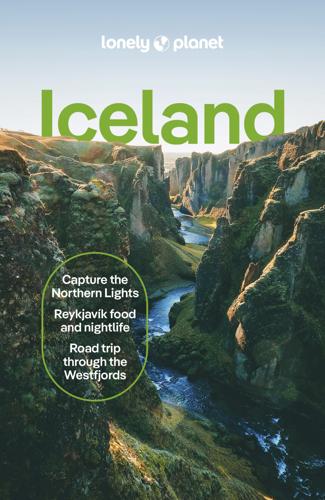
Lonely Planet Iceland
by
Lonely Planet
Lonely Planet and the Lonely Planet logo are trademarks of Lonely Planet and are registered in the US Patent and Trademark Office and in other countries. Lonely Planet does not allow its name or logo to be appropriated by commercial establishments, such as retailers, restaurants or hotels. Please let us know of any misuses: lonelyplanet.com/legal/intellectual-property. Mapping data sources: © Lonely Planet © OpenStreetMap http://openstreetmap.org/copyright

The Equality Machine: Harnessing Digital Technology for a Brighter, More Inclusive Future
by
Orly Lobel
Published 17 Oct 2022
Created in 2016 in São Paulo, Brazil, the Geochicas mapping project is a digitally driven effort to augment our physical environment and help women navigate the spaces around them, and the initiative has helped increase the number of women contributing to digital mapping. The effort came out of the realization that a minuscule number of mappers contributing to the world’s largest crowdsourced database, OpenStreetMap, were female. Yeliz Osman, a gender violence expert at UN Women, explains that maps are representations of the world, nothing that “when women map, they are more likely than men to represent women’s specific needs and priorities, which is a key to driving change in local policies, plans and budgets.
…
Algorithms are already successfully helping to distinguish between forest elephant calls and all the other noises in tropical rainforests. Imagine applying the same technology advances to address equality issues. There is immense potential in integrating technology to bring more equality to public spaces, and Mapwith.ai, a partner of OpenStreetMap, has already begun building plug-in tools to help optimize mapping for inclusion. While the work here is only beginning, we can feel optimistic about inclusive mapping ahead. Testing Our Books and the Big Screen One of the largest digital spaces that still struggles with equitable gender representation is that of film and television.

Solr in Action
by
Trey Grainger
and
Timothy Potter
Published 14 Sep 2014
Figure 15.1 demonstrates the area inside of which documents would be returned from the previous query for a 20 km radius. Figure 15.1. The geographical area from which documents would be returned from a geofilt query requesting a distance of d=20 km from the center of San Francisco, CA. (© OpenStreetMap.org contributors) The geofilt query demonstrated in figure 15.1 works under the covers using a two-pass filtering mechanism. The first pass creates a bounding box: a square with sides equal in length to the diameter of the radius being searched. Once the document set has been filtered down by the relatively quick bounding box filter, the distance is then calculated for all documents remaining so that documents inside the bounding box but outside the circular radius can be filtered out.
…
The area inside the box is guaranteed to contain all documents within a 20 km radius of the center of the box, though it may also contain documents a greater distance away. The radius circle is calculated after the bounding box filter is applied in order to remove documents near the four corners of the bounding box. (© OpenStreetMap.org contributors) Although the second part of the geofilt query—the calculation of the distance—enables accurate location resolution (often within a few meters), it can be expensive to calculate the exact distance of many documents if you have a large document set. In some cases, it’s good enough to include all the matching documents within the bounding box and forego incurring the cost of the more precise circular radius filter.
…
Figure 15.4 provides a more concrete example for how a search for documents near San Francisco, CA, might be constructed. Figure 15.4. The San Francisco, CA, area, as modeled into grid levels. The central parts of the area are wholly contained within more granular levels (larger boxes), whereas the edges may require using more precise levels to closely approximate the shape’s edges. (© OpenStreetMap.org contributors) You can see from figure 15.4 that if the world is broken up into multilevel grids, querying for something in the “shape” of the San Francisco area is a matter of finding the best combination of larger and smaller grid boxes which wholly contain San Francisco without accidentally including other areas.
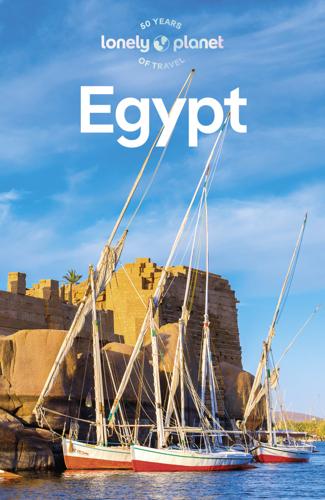
Lonely Planet Egypt
by
Lonely Planet
Lonely Planet and the Lonely Planet logo are trademarks of Lonely Planet and are registered in the US Patent and Trademark Office and in other countries. Lonely Planet does not allow its name or logo to be appropriated by commercial establishments, such as retailers, restaurants or hotels. Please let us know of any misuses: lonelyplanet.com/legal/intellectual-property. Mapping data sources: © Lonely Planet © OpenStreetMap http://openstreetmap.org/copyright

Beautiful Data: The Stories Behind Elegant Data Solutions
by
Toby Segaran
and
Jeff Hammerbacher
Published 1 Jul 2009
Mapping multivariate location traces In the early stages of the design process, we mapped GPS traces the way that users typically see location tracks: simply a line that goes from point to point. This was before taking values from the microenvironment models into account, so the map was a basic implementation 8 CHAPTER ONE Download at Boykma.Com using Modest Maps and tiles from OpenStreetMap. GPS traces were mono-colored and represented nothing but location; there was a circle at the end so that the user would know where the trip began and ended. This worked to a certain extent, but we soon had to visualize more data, so we changed the format. We colored traces based on impact and exposure values.
…
We created a simple scatterplot of the latitudes and longitudes, shown in Figure 18-13. F I G U R E 1 8 - 1 3 . (Top) A small point is drawn for every residential sale in the data. It gives us a pretty good feel for the layout of San Francisco. (Bottom) For comparison, a street map of San Francisco from http://openstreetmap.com. (See Color Plate 68.) 318 CHAPTER EIGHTEEN Download at Boykma.Com For the residential parts of the city, this gives an amazingly detailed picture. We can see the orientation of the streets, the waterfront boundaries, and parks. Our view of some areas, like downtown, is patchier because there are fewer residential homes there.
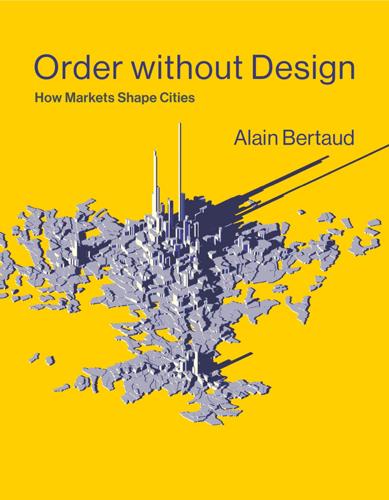
Order Without Design: How Markets Shape Cities
by
Alain Bertaud
Published 9 Nov 2018
Weber, 1999, in The Archaeology of Byzantine Anatolia: From the End of Late Antiquity until the Coming of the Turks, ed. Philipp Niewöhner (Oxford: Oxford University Press, 2017). Figure 3.4 The author, with his two assistants, tracing new streets in Yemen, 1970. Figure 3.5 Le Corbusier’s Plan Voisin for Paris. Sources: Paris built-up background map: OpenStreetMap®; Plan Voisin: three-dimensional model by author based on plans and drawings from the “Fondation Le Corbusier” website and from Le Corbusier, The City of Tomorrow and Its Planning (New York: Dover Publications, Inc., 1987). Figure 3.6 Application of the sun rule—footprint of danwei housing in Beijing, Ningbo, and Guangzhou.
…
Le Corbusier’s doctrine consisted of deliberately ignoring markets and of designing neighborhoods, and even entire cities, based on the norms he selected and on his interpretation of rational human needs. Figure 3.5 Le Corbusier’s Plan Voisin for Paris. Sources: Paris built-up background map: OpenStreetMap®; Plan Voisin: three-dimensional model by author based on plans and drawings from the “Fondation Le Corbusier” website and from Le Corbusier, The City of Tomorrow and Its Planning (New York: Dover Publications, Inc., 1987). Counterintuitively, the design approach to urban planning often results in repetitive design, while the market approach results in a variety of designs.

What's Yours Is Mine: Against the Sharing Economy
by
Tom Slee
Published 18 Nov 2015
Wikipedia is so identified with web-based collaboration that its name has been incorporated into book titles (Wikinomics: How Mass Collaboration Changes Everything) and related initiatives such as the leaked document site WikiLeaks. In Benkler’s The Wealth of Networks, Wikipedia plays a prominent role as an exemplar of “commons-based peer production.” But Wikipedia turned out to be more the exception than the rule. While there are other not-for-profit large-scale collaborative platforms (OpenStreetMap, for example), no other non-commercial site has reached anything resembling Wikipedia’s influence. As Sue Gardner, then Executive Director of the Wikimedia Foundation, wrote in 2011: Wikipedia represents the fulfilment of the original promise of the internet: that it’s a kind of poster child for online collaboration in the public interest.

Ours to Hack and to Own: The Rise of Platform Cooperativism, a New Vision for the Future of Work and a Fairer Internet
by
Trebor Scholz
and
Nathan Schneider
Published 14 Aug 2017
Commons-based peer production refers to a set of activities characterized by collaborative production, involving peer-to-peer relationships and a resulting common resource. This model stands in stark contrast to traditional, hierarchical command relationships. It relies on access to open commons resources—favoring access, reproducibility, and emulation. Some of the best-known examples are Linux, Wikipedia, OpenStreetMap, and SETI. Commons-based peer production is not identical with platform cooperativism, but our study is relevant to the larger platform co-op ecosystem, which is deeply reliant on commons-related practices. For a community of commons-based peer producers to operate, there needs to be a platform—made possible by the people who create it, maintain it, and facilitate its legal framework.
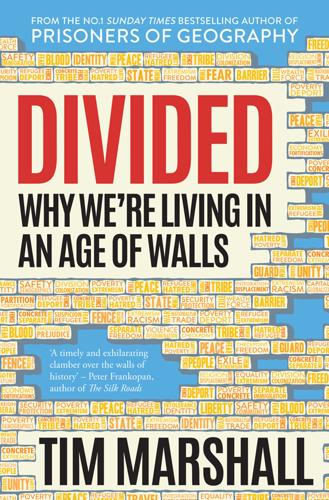
Divided: Why We're Living in an Age of Walls
by
Tim Marshall
Published 8 Mar 2018
Picture credits: Pages 8–9: iStock.com/real444; pages 36–7: Herika Martinez/AFP/Getty Images; pages 68–9: iStock.com/Joel Carillet; pages 96–7: Ahmad Al-Rubaye/Stringer/ Getty Images; pages 120–21: STRDEL/AFP/Getty Images; pages 152–3: Stefano Montesi/Corbis News/Getty Images; pages 180–81: The Washington Post/Getty Images; pages 214–15: Epics/Hulton Archive/Getty Images Maps: JP Map Graphics Ltd Sources for maps: Pages 17 and 22: The Economist/2010 China census; page 44: Openstreetmap.org; page 57: Pew Research Center; pages 104–5: CRS, Pew Research Center, CIA World Factbook; page 134: Diercke International Atlas; page 163: John Bartholomew & Co; page 230: BBC. A catalogue record for this book is available from the British Library. Typesetting: Marie Doherty Cover design by davidwardle.co.uk

Mastering Structured Data on the Semantic Web: From HTML5 Microdata to Linked Open Data
by
Leslie Sikos
Published 10 Jul 2015
For example, the city of Adelaide has two addresses on GeoNames: http://sws.geonames.org/2078025/ and http://sws.geonames.org/2078025/about.rdf. The first represents the city (in a form used in Linked Data references); the second is a document with information about Adelaide. 65 Chapter 3 ■ Linked Open Data LinkedGeoData The LinkedGeoData dataset at http://linkedgeodata.org uses the information collected by OpenStreetMap data (a free editable world map), makes it available as an LOD dataset, and interlinks this data with other LOD datasets. The authors of the dataset provide their own semantic browser, called LGD Browser and Editor, at http://browser.linkedgeodata.org (see Figure 3-3). Figure 3-3. LinkedGeoData in the LGD Browser and Editor A good example for the unambiguity on the Semantic Web is searching for “Adelaide” in the LGD Browser.
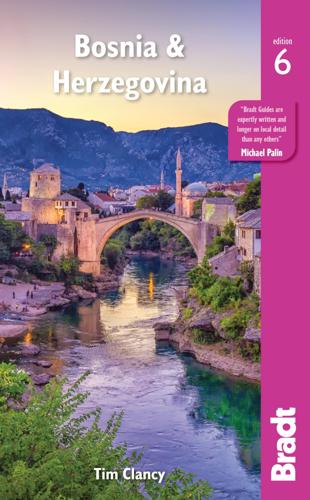
Bosnia and Herzegovina
by
Tim. Clancy
Published 15 Mar 2022
Nonetheless, it will get you where you need to go. All updated European maps include Bosnia and Herzegovina and its main communication arteries. The Freytag and Berndt maps of Bosnia and Herzegovina and Europe are excellent and cost around 12KM. Online maps can be found at w mapquest.com and perhaps the best are on Google and w openstreetmap.org, though be warned, they are still not always 100% accurate and can often lead you down unpaved and impassable roads the further out from the main towns you go. As for hiking and outdoor activity maps, the best can be found on w viadinarica.com and w outdooractive.com. RED TAPE Border control in Bosnia and Herzegovina resembles that in most European countries.
…
Sixth edition published May 2022 First published 2004 Bradt Guides Ltd 31a High Street, Chesham, Buckinghamshire, HP5 1BW, England www.bradtguides.com Print edition published in the USA by The Globe Pequot Press Inc, PO Box 480, Guilford, Connecticut 06437-0480 Text copyright © 2022 Tim Clancy Maps copyright © 2022 Bradt Guides Ltd; includes map data © OpenStreetMap contributors Photographs copyright © 2022 Individual photographers (see Click here) Project Managers: Laura Pidgley and Naomi Churn Cover research: Marta Bescos The author and publisher have made every effort to ensure the accuracy of the information in this book at the time of going to press.

Peers Inc: How People and Platforms Are Inventing the Collaborative Economy and Reinventing Capitalism
by
Robin Chase
Published 14 May 2015
Etsy, an online marketplace for makers, is not like a really big craft fair. eBay is different from both classifieds and yard sales. Airbnb is much more than a listing of 1 million bed-and-breakfasts. What distinguishes and transforms these activities is that platforms connect, organize, aggregate, and empower the participating peers. Without the platform—without Airbnb, Etsy, Lyft, TopCoder, or OpenStreetMaps, to name a few—the peer co-creators would not engage, the leveraged excess capacity would be limited, and the consumers of these products and services would not return again and again. Excess capacity turns out to be a key input into a Peers Inc product or service. The cost of experimentation is lowered as new value is extracted out of something that already exists and is already substantially (or entirely) paid for.

Enshittification: Why Everything Suddenly Got Worse and What to Do About It
by
Cory Doctorow
Published 6 Oct 2025
For decades, Google had insisted that “competition was just a click away,” but as Google bought out the search box on every platform and integrated its surveillance, cloud, and ad-tech services into the majority of the internet’s websites and apps, removing Google from your life became increasingly difficult. Now, even if you switch your default search engine to Bing or DuckDuckGo, even if you switch from Android to iOS, even if you switch your cloud storage to a self-hosted ownCloud instance, even if you switch your email to Proton Mail, even if you navigate with OpenStreetMap instead of Google Maps, you are still a Google user from the moment you log on until the moment you go to bed—and even as you sleep. Most of the websites you visit embed one or more Google assets—a tracking beacon used for Google analytics, a “free” font served from Google’s servers, or an ad placed by Google after being sold in a Google marketplace on behalf of an advertiser represented by Google’s demand-side platform.

The Corruption of Capitalism: Why Rentiers Thrive and Work Does Not Pay
by
Guy Standing
Published 13 Jul 2016
For instance, by offering cheap taxi rides they may reduce the numbers using subsidised public transport and accelerate the loss of public bus services. The real sharing economy is exciting some analysts. Paul Mason sees the emergence of commons-based peer production in the likes of Wikipedia, Linux, OpenStreetMap and Mozilla’s Firefox. In Spain, arts and culture collectives La Tabacalera and Medialab-Prado are prime examples. While these have great potential, they involve a lot of work by unpaid activists and can be pushed out or marginalised by commercial ventures. Many will need state subsidies in order to survive.
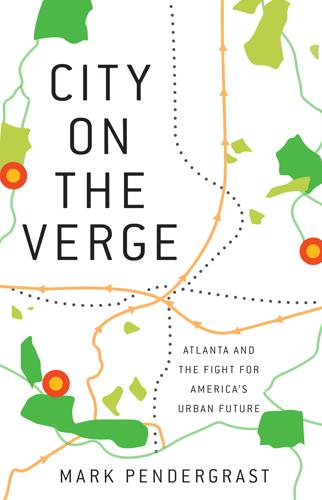
City on the Verge
by
Mark Pendergrast
Published 5 May 2017
Part II NEIGHBORS Part II explores the neighborhoods in the four quadrants adjacent to the BeltLine as well as selected areas outside the Atlanta city limits and downtown. The final chapter brings the story through most of 2016 and offers my conclusions. To orient themselves, readers should consult easily available online maps such as Google Maps, MapQuest, or OpenStreetMap as they read these chapters, zooming in and out to follow along. Atlanta BeltLine, Inc., also offers helpful maps on its website. CHAPTER 10 EAST BELTLINE: CHIC, WALKABLE NEIGHBORHOODS Prices have skyrocketed in very short order. If you ask why, this part of the city was already in resurgence, but the Beltline Eastside Trail is the big artery pumping life into it.
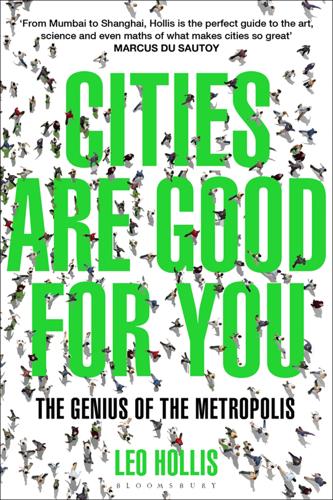
Cities Are Good for You: The Genius of the Metropolis
by
Leo Hollis
Published 31 Mar 2013
Even before the quake, Port au Prince had been a chaotic city; beyond the central neighbourhoods there had been few attempts to map the slums, shanties and informal streets. Many of these were out of bounds to officials; others were in such a state of flux that no map could reasonably keep up to date. However, in this time of desperation, there was a need for accurate maps so that aid could be delivered where necessary. Using Openstreetmap, volunteers pored over Google Earth satellite maps tracing primary and secondary streets, damaged buildings and, as they emerged, refugee camps.12 Within forty-eight hours, volunteers working independently around the world were changing the way aid workers were operating on the ground, giving them accurate locations and data.

The Metaverse: And How It Will Revolutionize Everything
by
Matthew Ball
Published 18 Jul 2022
As we know, gaming experiences now sit at the forefront of the industry—including at Microsoft. Recall that Microsoft Flight Simulator is a marvel of both technology and collaboration. Though Xbox Game Studios developed and published the title, it was built in partnership with Bing Maps and leveraged data from OpenStreetMaps, a collaborative and free-to-use online geographic, with Azure’s artificial intelligence bringing this data together into 3D visualizations, powering real-time weather, and supporting cloud data streaming. The Xbox division also has its own hardware suite, the most popular cloud game-streaming service in the world, a fleet of first-party game studios, and a handful of proprietary engines.

Who Owns England?: How We Lost Our Green and Pleasant Land, and How to Take It Back
by
Guy Shrubsole
Published 1 May 2019
(Frank Newbould/IWM via Getty Images) PICTURE SECTION All pictures taken by the author unless otherwise stated. Map of land ownership. Map generated using data compiled from multiple Freedom of Information requests to public authorities alongside publicly-available information. Contains OS data © Crown copyright Ordnance Survey. Map tiles © Mapbox © OpenStreetMap. To view the interactive map and a full list of the sources for each layer, please visit map.whoownsengland.org West Berkshire land ownership map. Map generated using data released by West Berkshire Council following a Freedom of Information Request. Underlying map data © 2019 Google Richard Benyon MP’s deer park Kinder Scout mass trespass, 1932 (© Illustrated London News Ltd/Mary Evans) Arundel Castle Kingsway bomb shelter and telephone exchange Forestry Commission pine plantation A grouse moor in the Peak District Nicholas van Hoogstraten’s unfinished empty mansion in Uckfield, Sussex Protesters battle for Greenham Common (Sahm Doherty/The LIFE Images Collection/Getty Images) ‘Private – No Public Right of Way’ sign Protest outside empty Mayfair mansion St George’s Hill, birthplace of the Diggers Queen’s Chapel of the Savoy Landfill site at Tilbury, Essex White Cliffs of Dover About the Author Guy Shrubsole works as a campaigner for Friends of the Earth and has written for numerous publications including the Guardian and New Statesman.

Spies, Lies, and Algorithms: The History and Future of American Intelligence
by
Amy B. Zegart
Published 6 Nov 2021
In 2000, approximately 15 percent of the world’s population was connected to the Internet.51 Today, more than half the world is online, and more people are estimated to have mobile phones than access to running water.52 Connectivity is turning everyday citizens into intelligence collectors, whether they know it or not. There’s also metadata—such as the time, location, and equipment used to take a photograph posted online—downloadable 3D modeling applications, and community data sharing sites like OpenStreetMap, which allows users to post their GPS coordinates from their phones. All of these capabilities offer new clues and tools for nuclear sleuths. As discussed more below, the online information ecosystem is making possible exciting new opportunities for societal verification or open crowdsourcing to assess nuclear threat information.
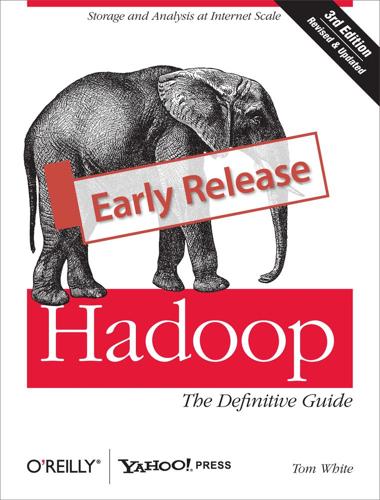
Hadoop: The Definitive Guide
by
Tom White
Published 29 May 2009
This sharply reduces the intermediate data size, yet still does a reasonable job of estimating cohesiveness. —Philip (flip) Kromer, Infochimps * * * [144] http://infochimps.org/search?query=network [145] http://www.datawrangling.com/wikipedia-page-traffic-statistics-dataset [146] http://www.wormatlas.org/neuronalwiring.html [147] http://www.openstreetmap.org/ [148] All are steady-state network flow problems. A flowing crowd of websurfers wandering the linked-document collection will visit the most interesting pages the most often. The transfer of social capital implied by social network interactions highlights the most central actors within each community.
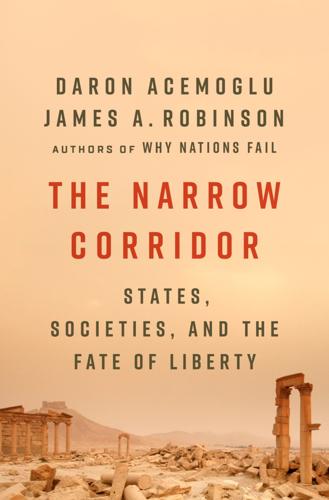
The Narrow Corridor: States, Societies, and the Fate of Liberty
by
Daron Acemoglu
and
James A. Robinson
Published 23 Sep 2019
Ashoka Pillar and Rock Edicts from Geonames, https://www.geonames.org/. Map 13: Holy Roman Empire from Shepherd (1911). Brandenburg and Prussia from EarthWorks, Stanford Libraries, https://earthworks.stanford.edu/catalog/harvard-ghgis1834core. Map 14: Trampoline of Death from Humanitarian OpenStreetMap Team, https://www.hotosm.org. Middle Magdalena and Sibundoy Valley from Instituto Geográfico Agustín Codazzi, https://www.igac.gov.co. Map 15: Clower, Dalton, Harwitz, and Walters (1966). REFERENCES Aaronson, Daniel, Daniel Hartley, and Bhash Mazumder (2017). “The Effects of the 1930s HOLC ‘Redlining’ Maps.”

The Rough Guide to South America on a Budget (Travel Guide eBook)
by
Rough Guides
Published 1 Jan 2019
Information and maps Ministry of Tourism iTur offices (ecuador.travel), in provincial capitals and the main tourist centres, supply maps, lists of hotels, restaurants and sights, and the website is a good source of information. Quito’s main tourist office is the best in Ecuador. The Instituto Geográfico Militar in Quito, Seniergues E4-676 y Gral. Telmo Paz y Miño, sells topographical maps for $3 (bring your passport as ID to enter the institute). For tablets and smartphones, apps using OpenStreetMap (openstreetmap.org) tend to be slightly superior to Google Maps. Waze (waze.com) is excellent for finding your way. Money and banks Ecuador uses the US dollar as its currency. There are 1, 5, 10, 25, 50 cent and 1 dollar coins. Notes come in 1, 5, 10, 20, 50 and 100 dollars, though avoid the last two if you can as they’re tough to change.
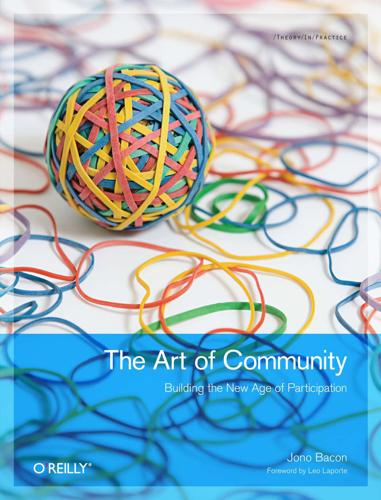
The Art of Community: Building the New Age of Participation
by
Jono Bacon
Published 1 Aug 2009
Instead of merely enjoying things together, collaboration goes so far as to help people create things together. In these environments, the community also assumes the role of producer of the content. The typical example here is one of the many Free Culture communities, such as Linux, Wikipedia, OpenStreetMap, Creative Commons, and so on. In these communities, community members have the opportunity to change the very content that brings them together. The Ubuntu community is one such example. Ubuntu is an entirely free Linux operating system that is designed to provide a complete, free, stable, and secure system for desktops, servers, or mobile devices.